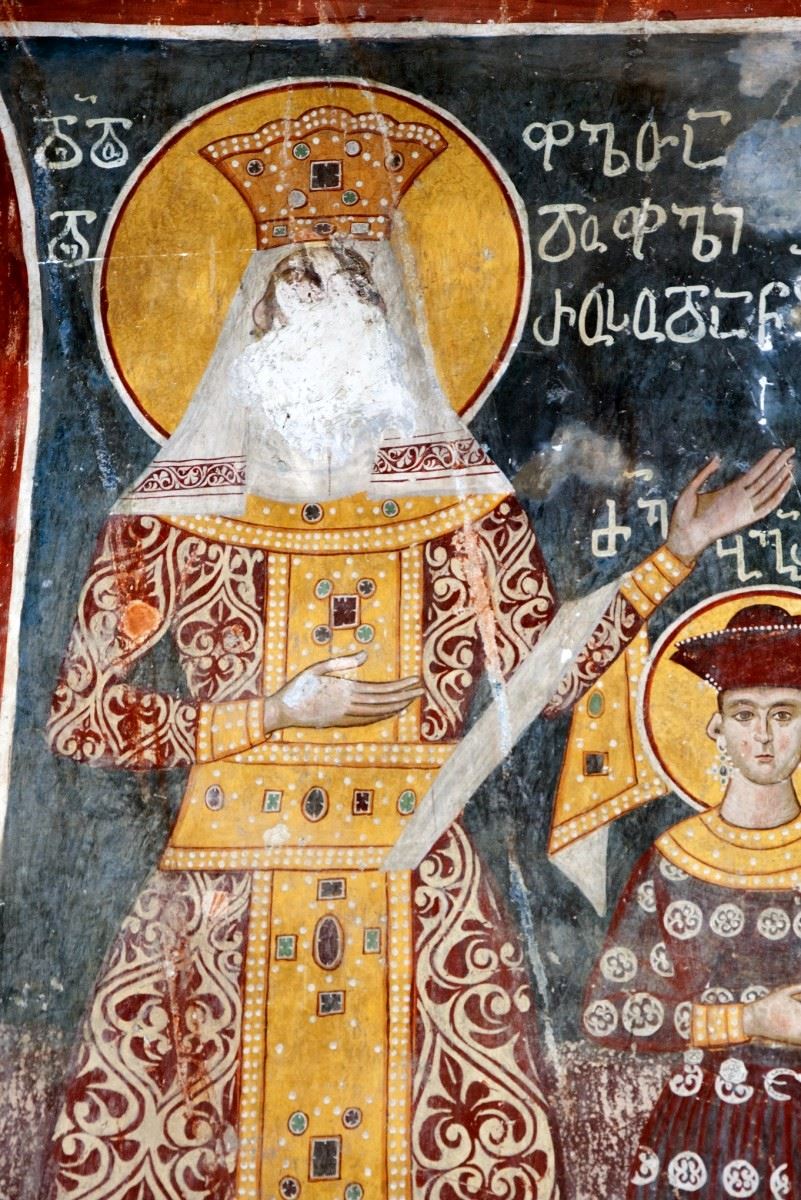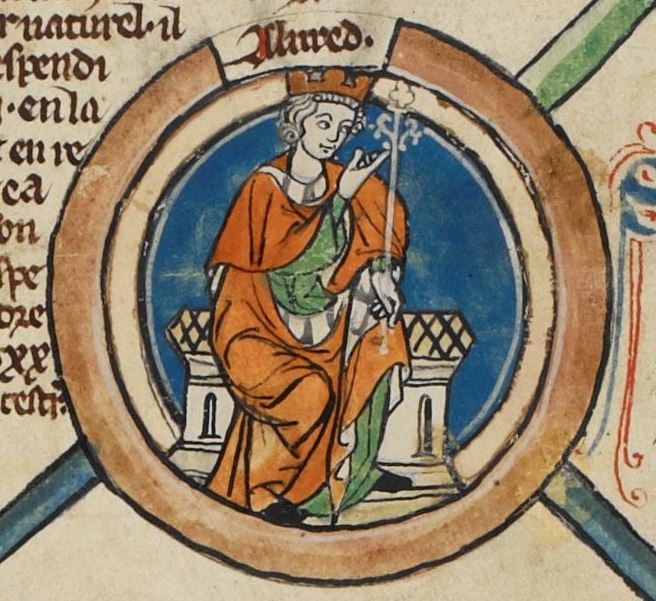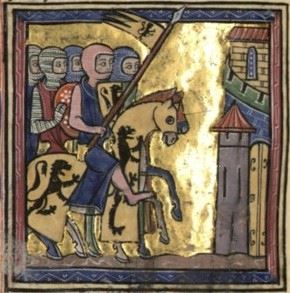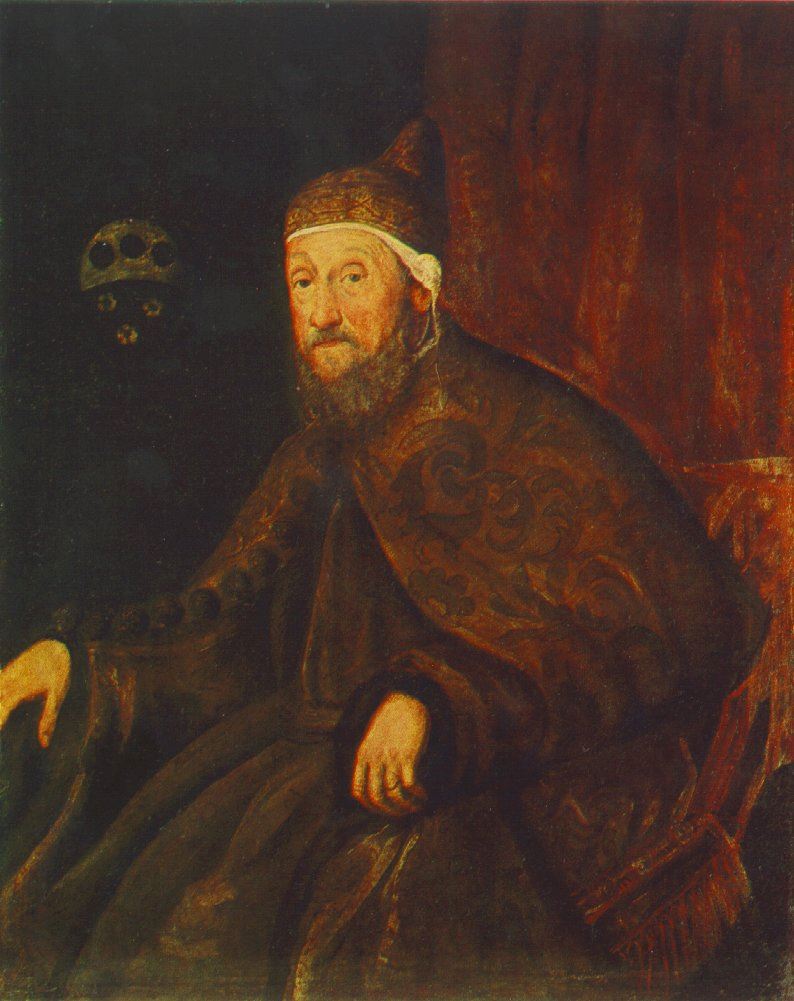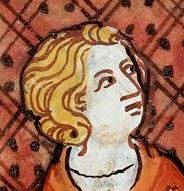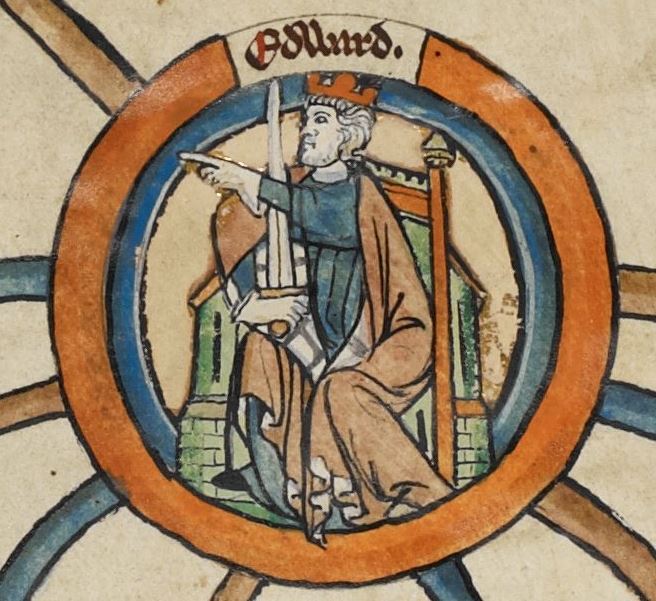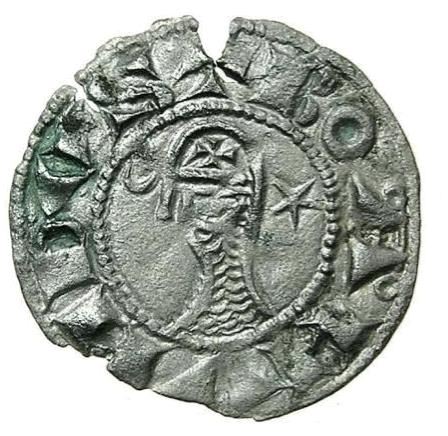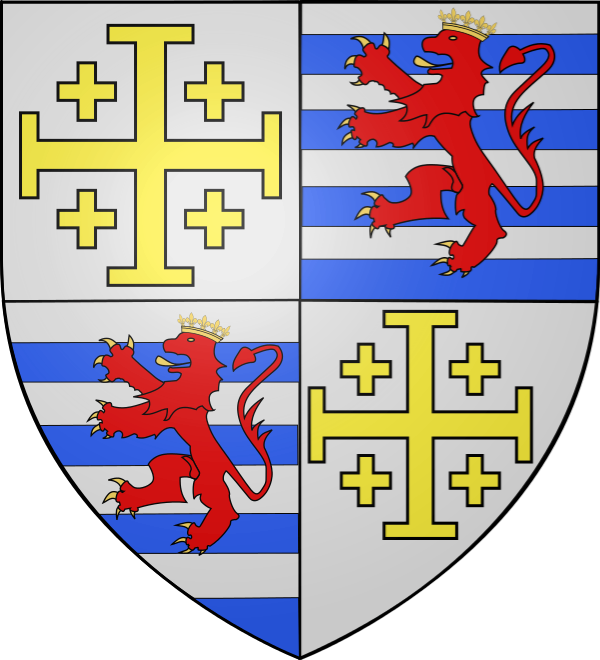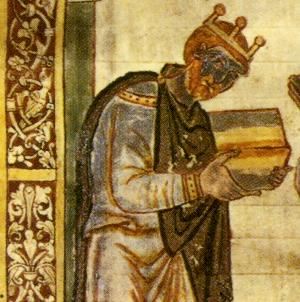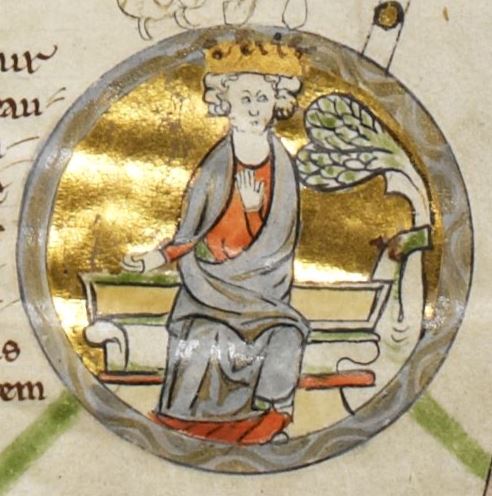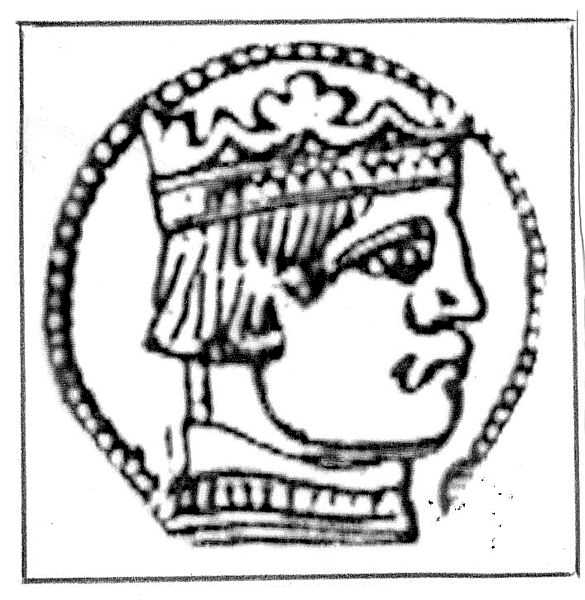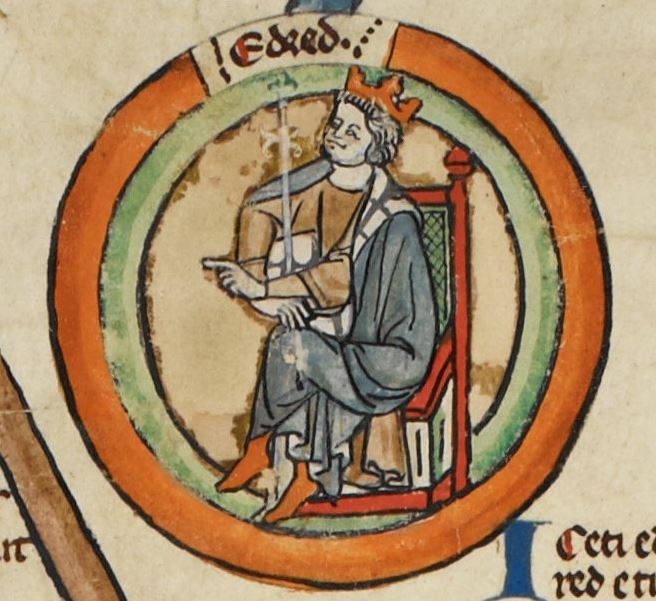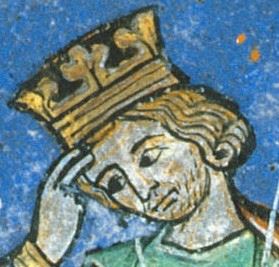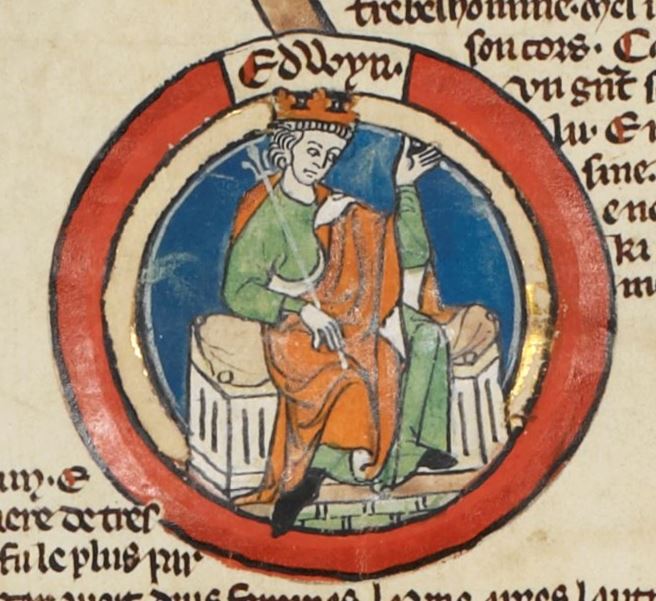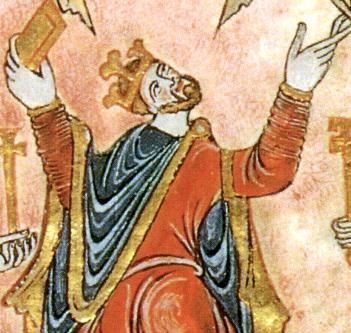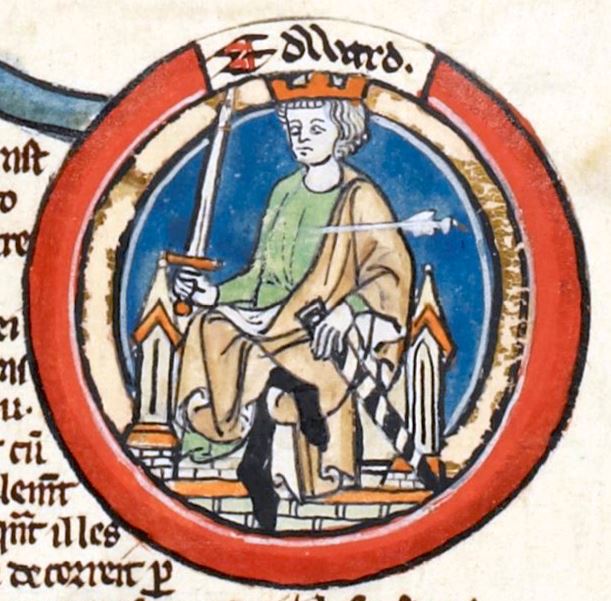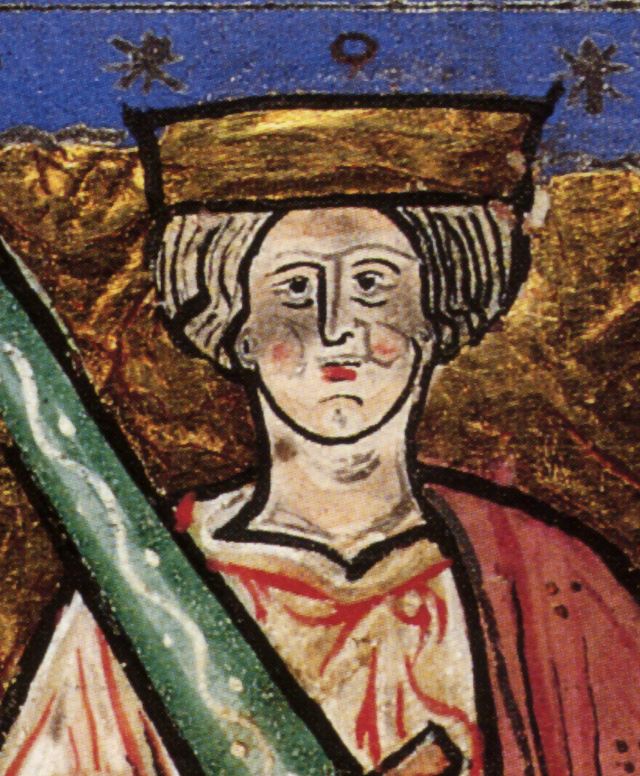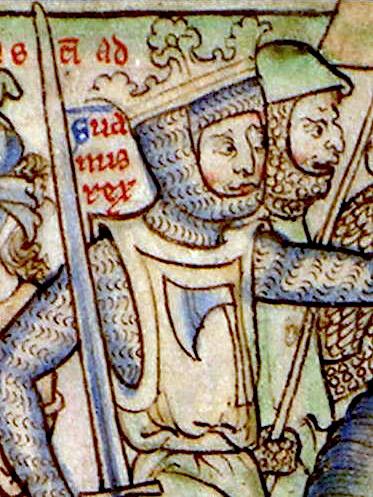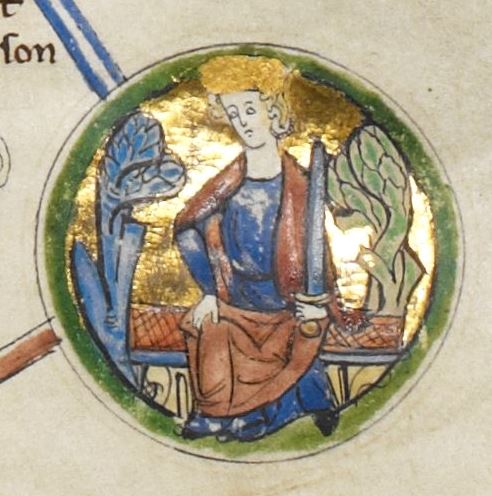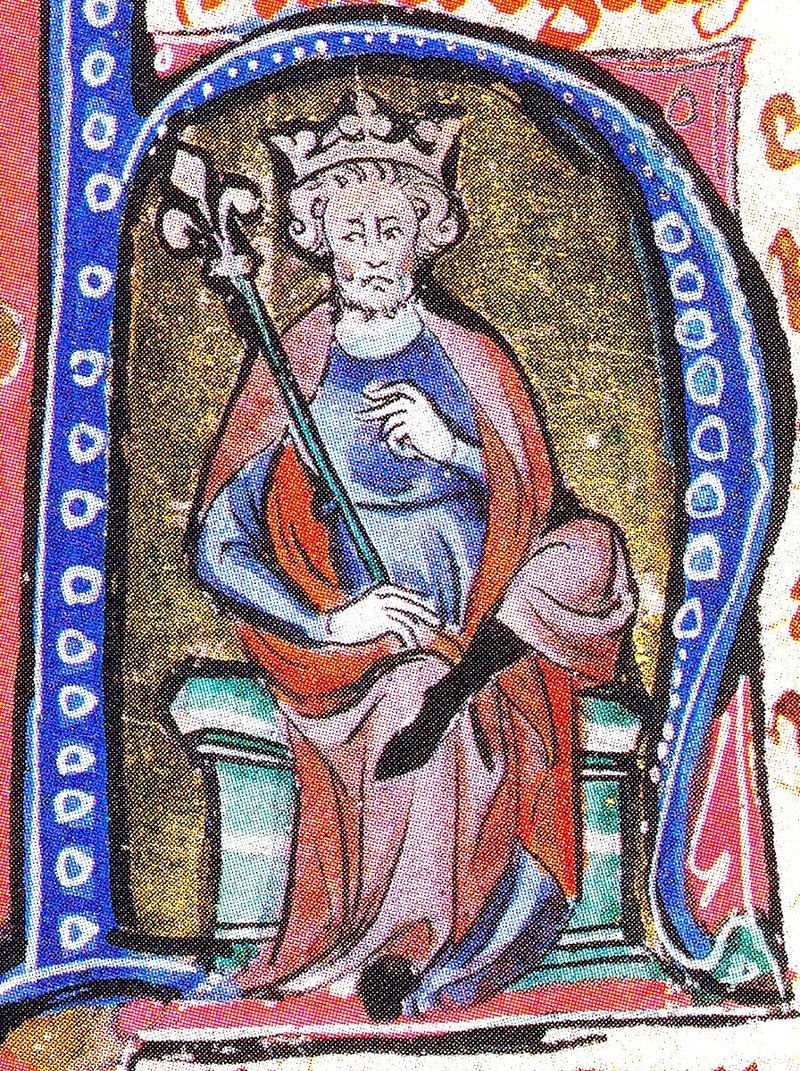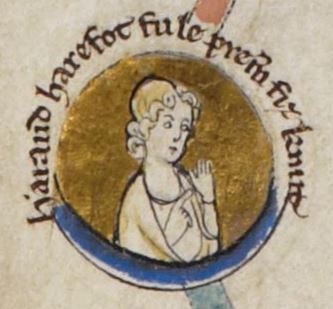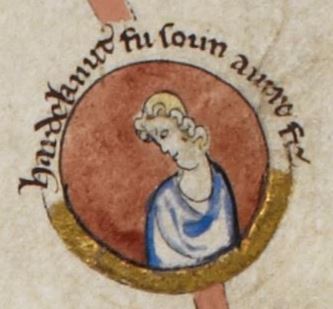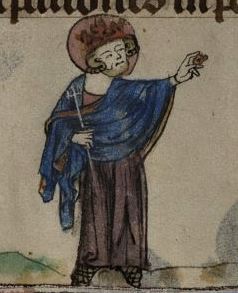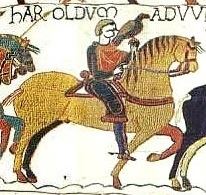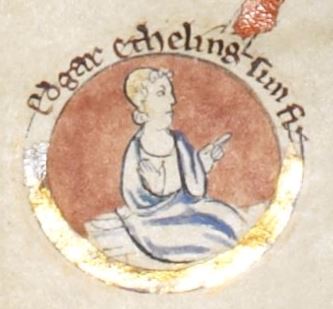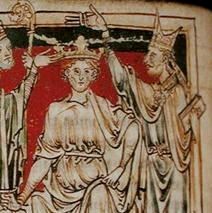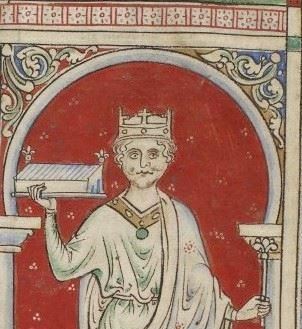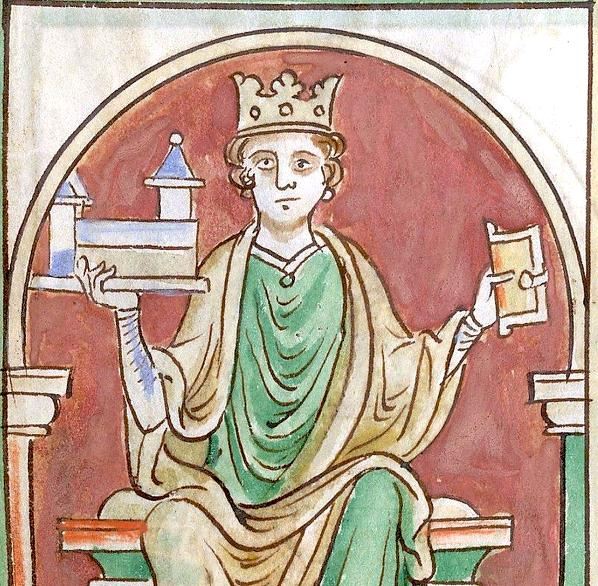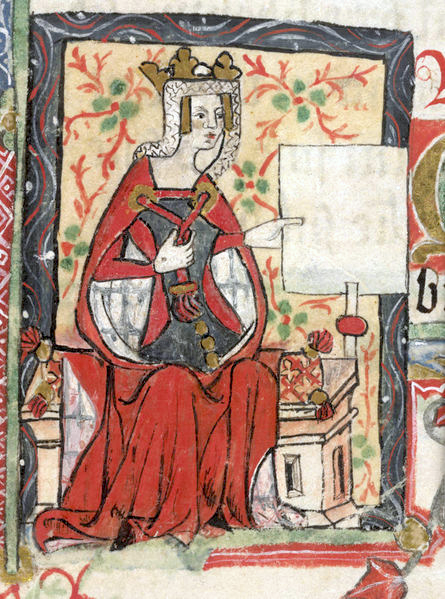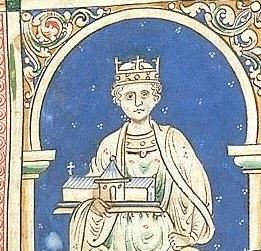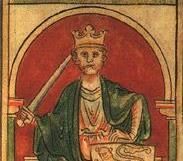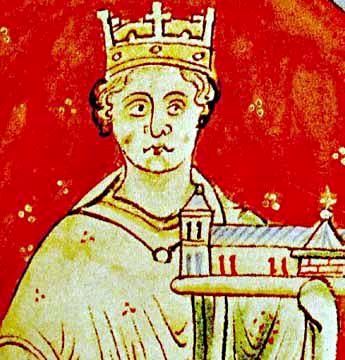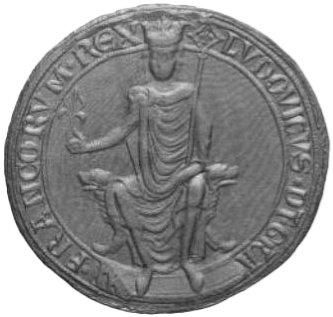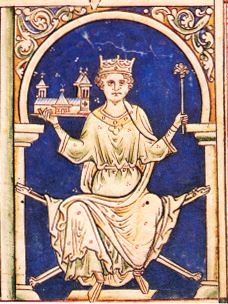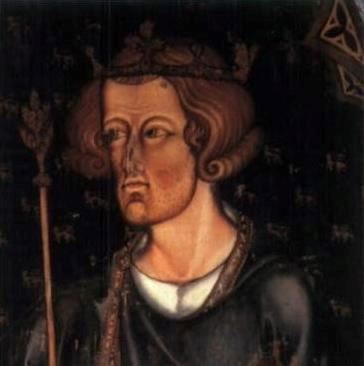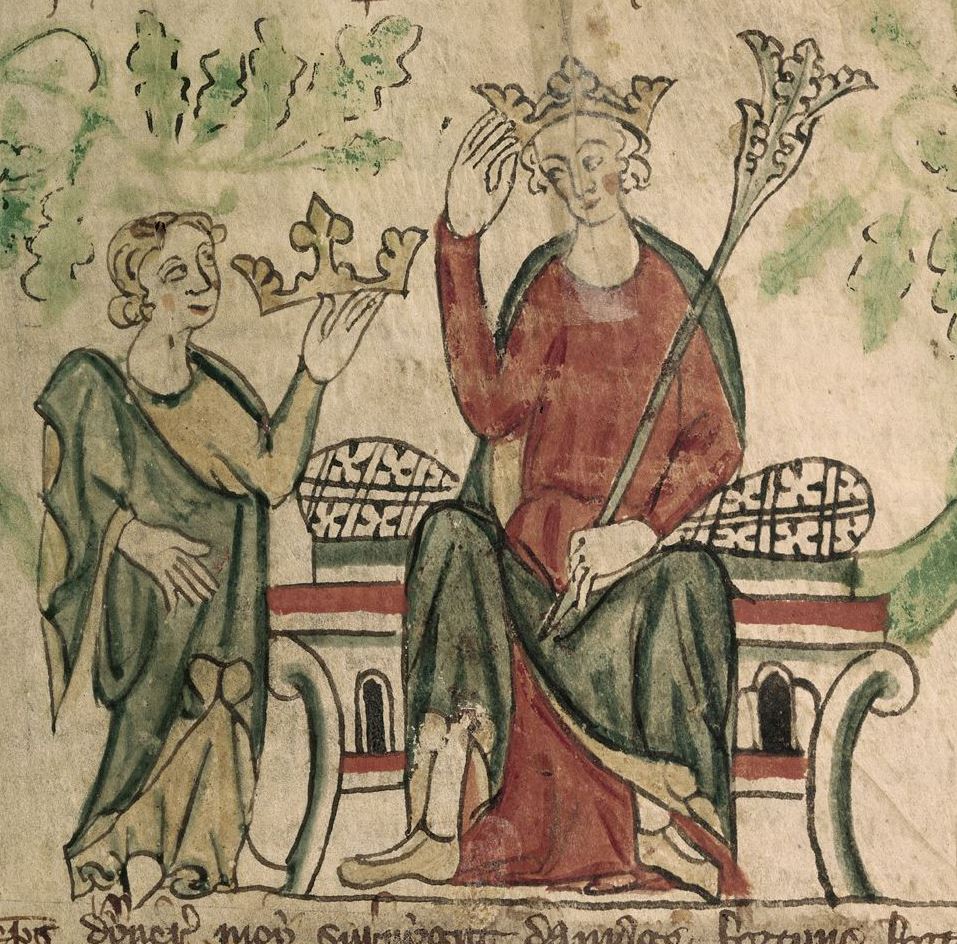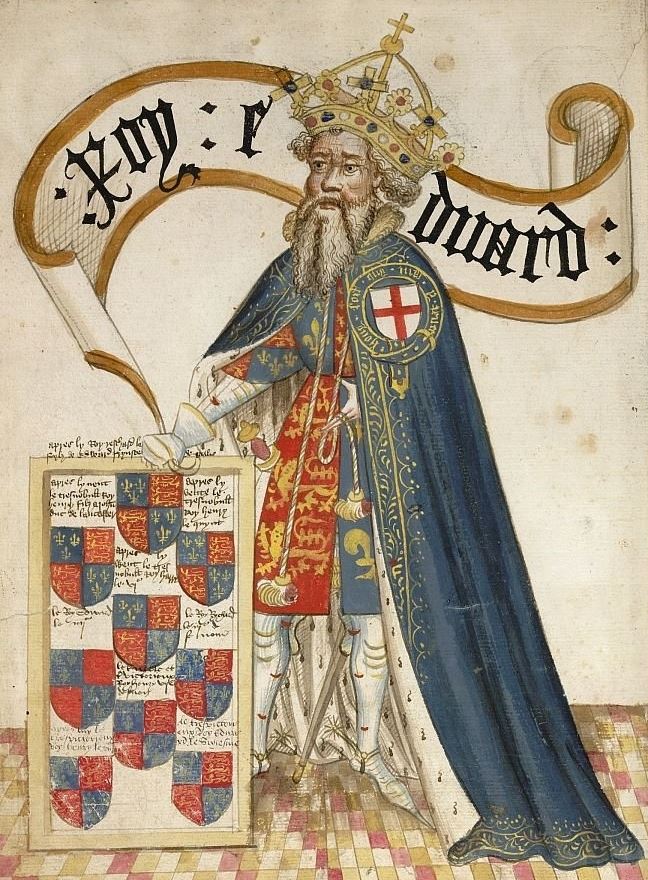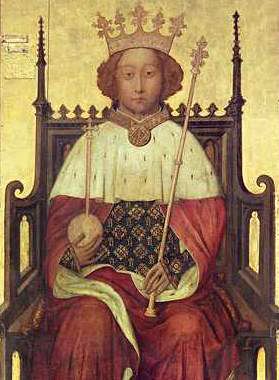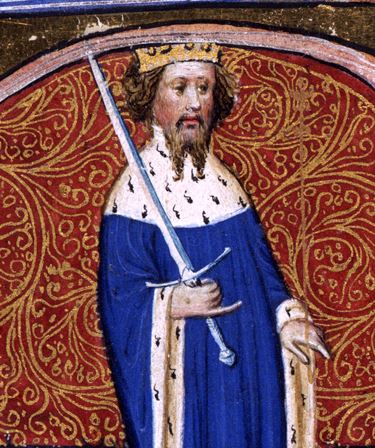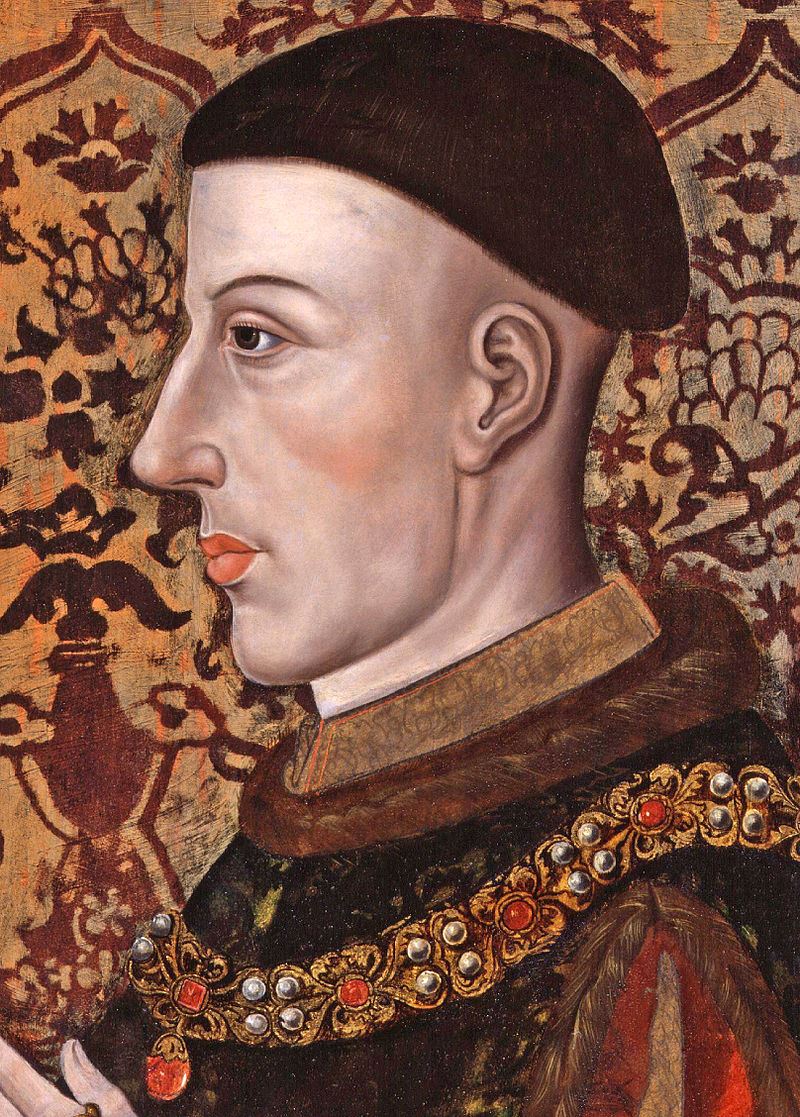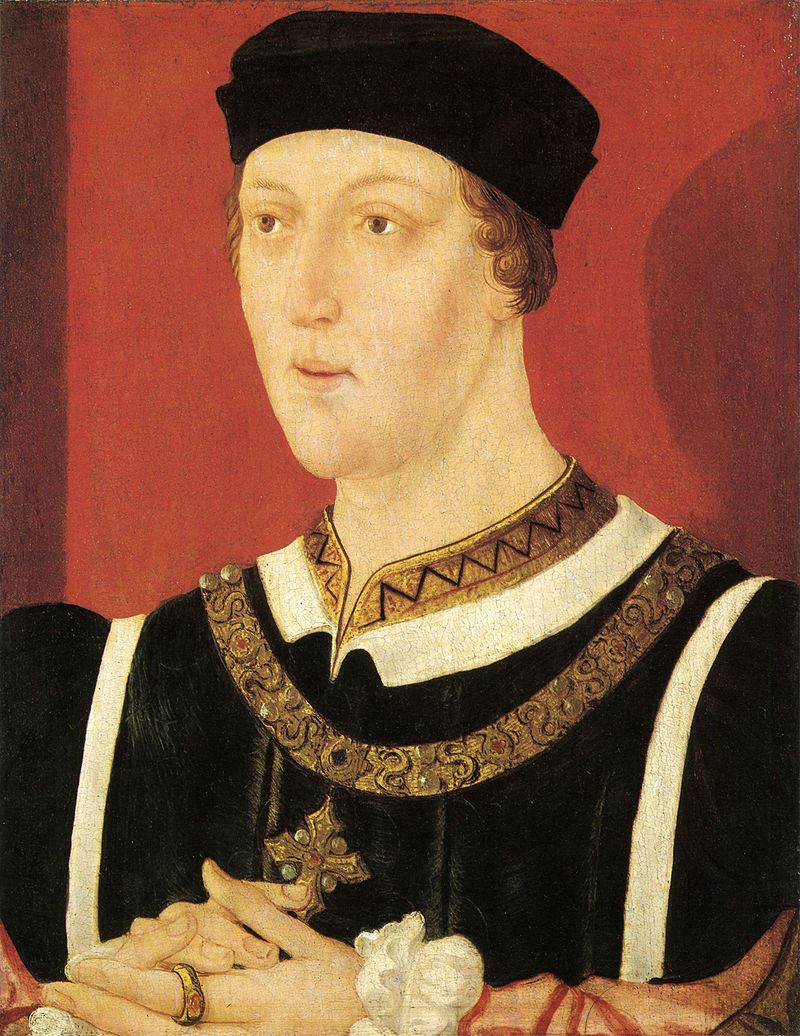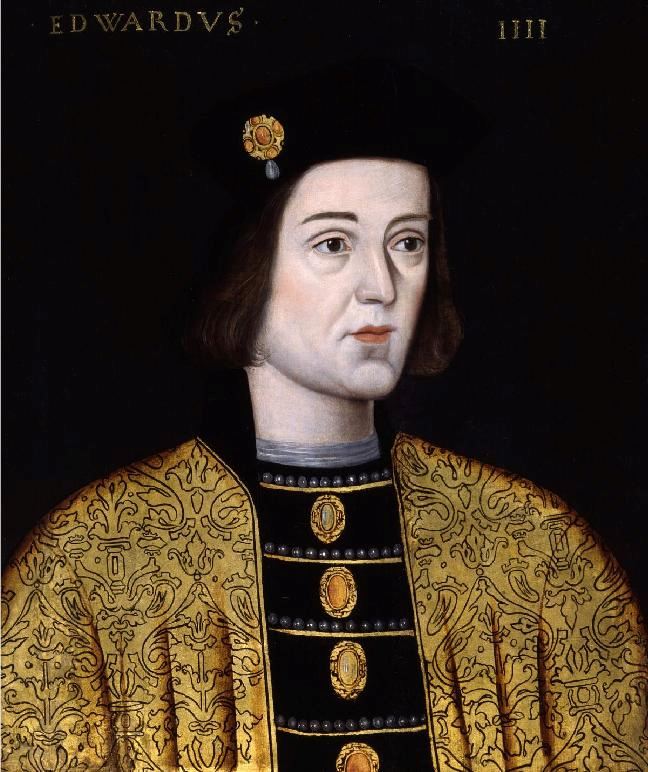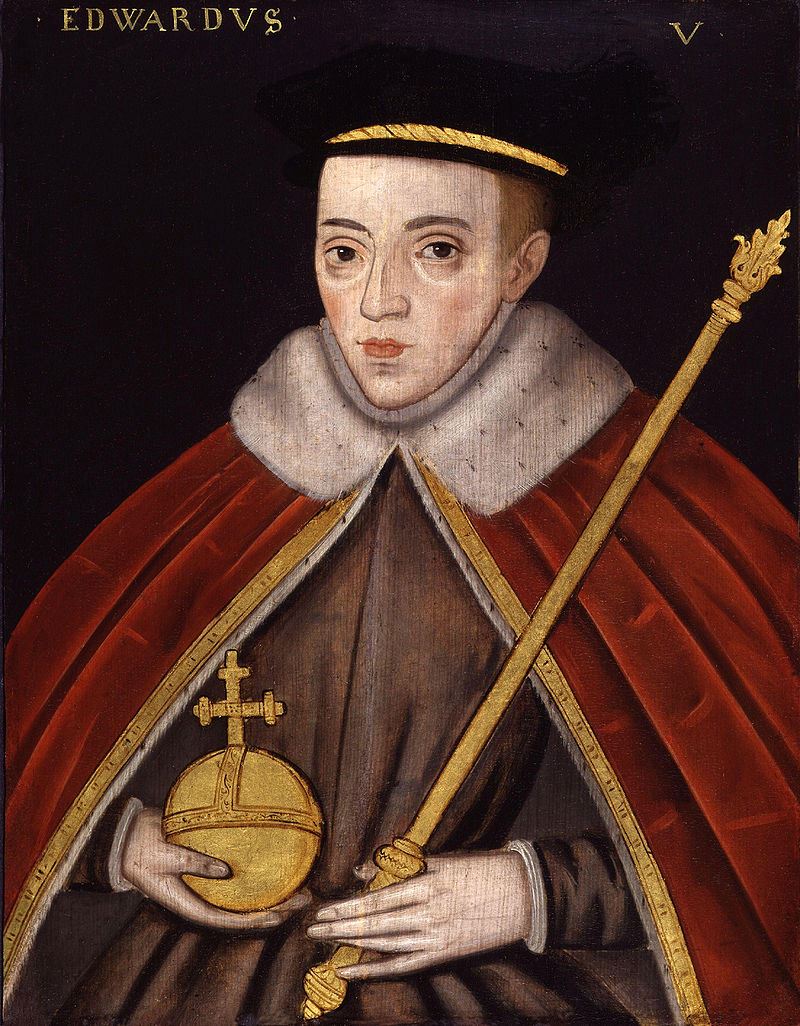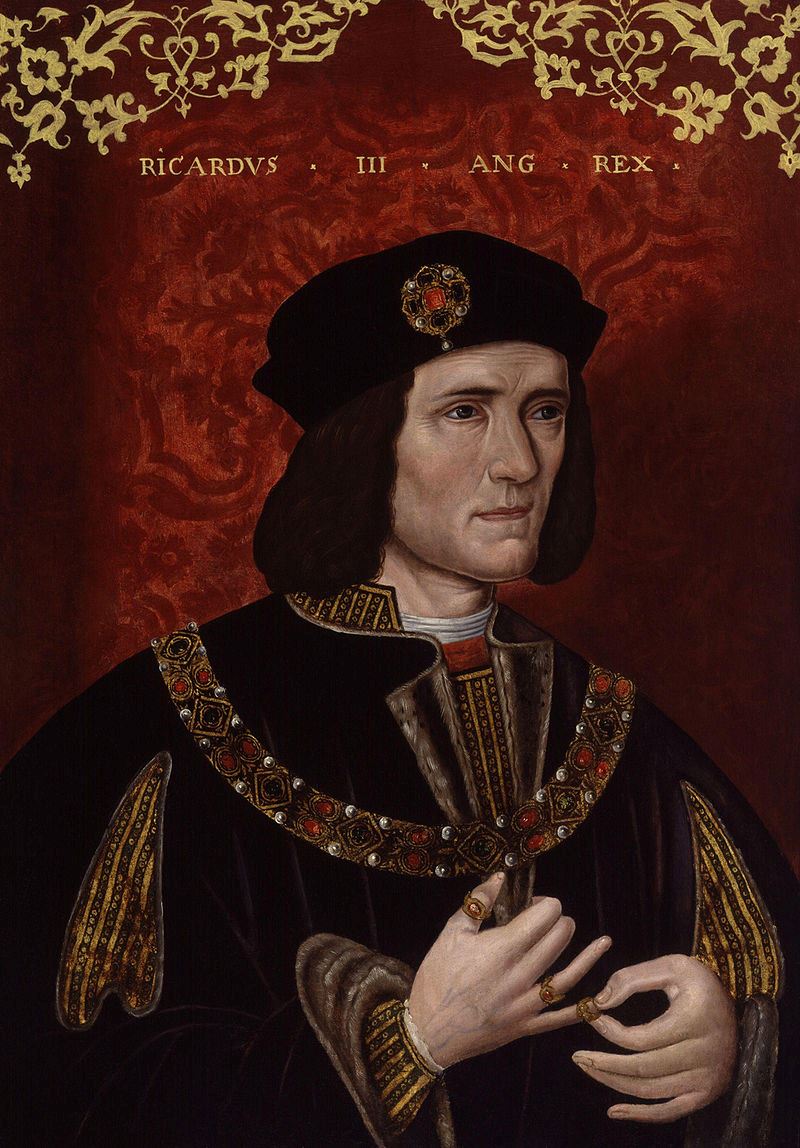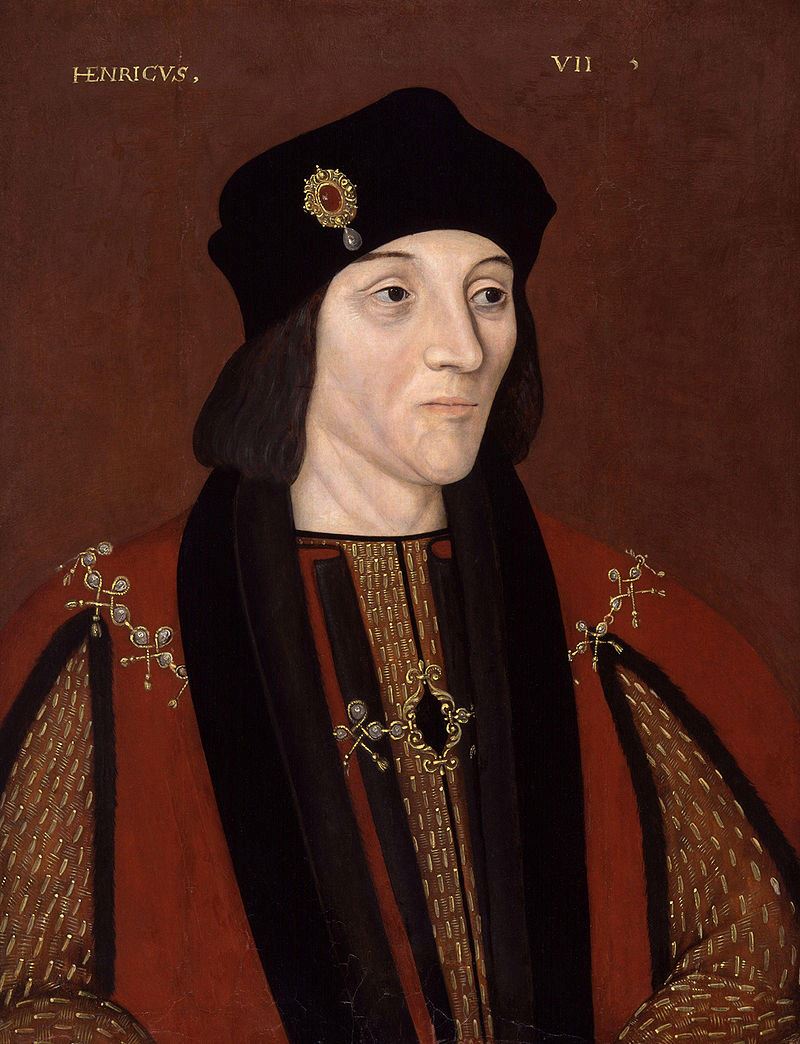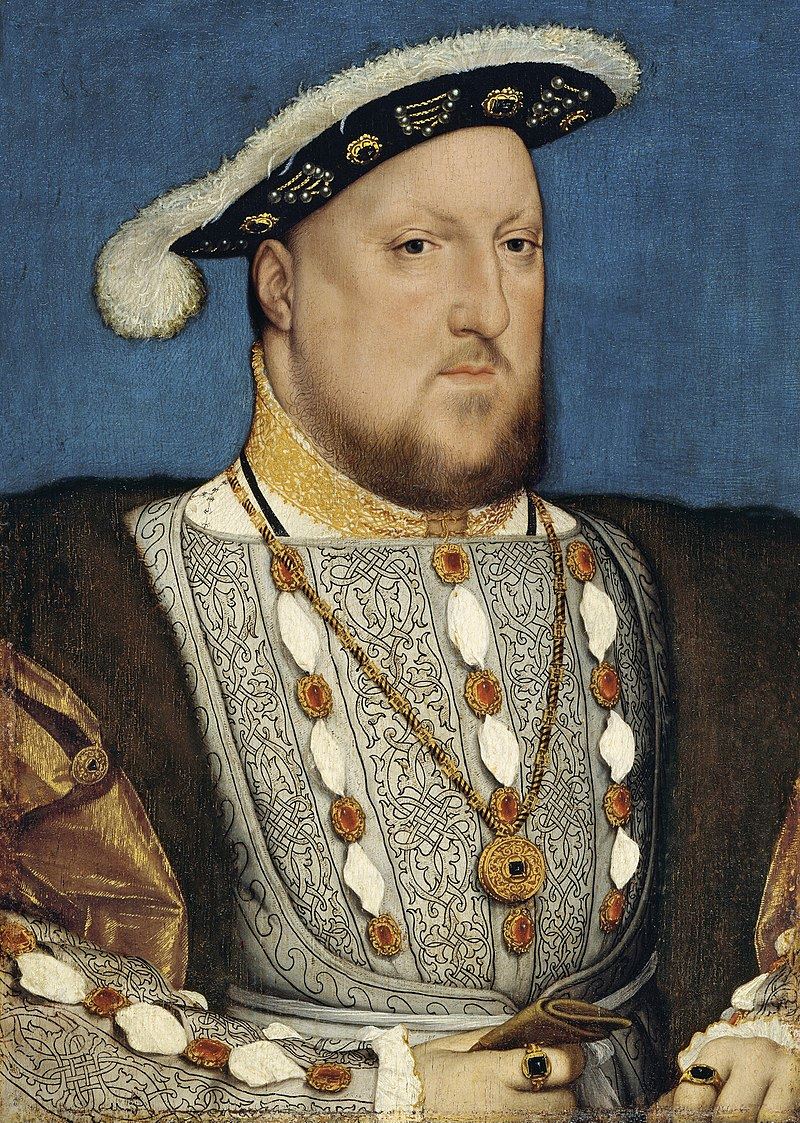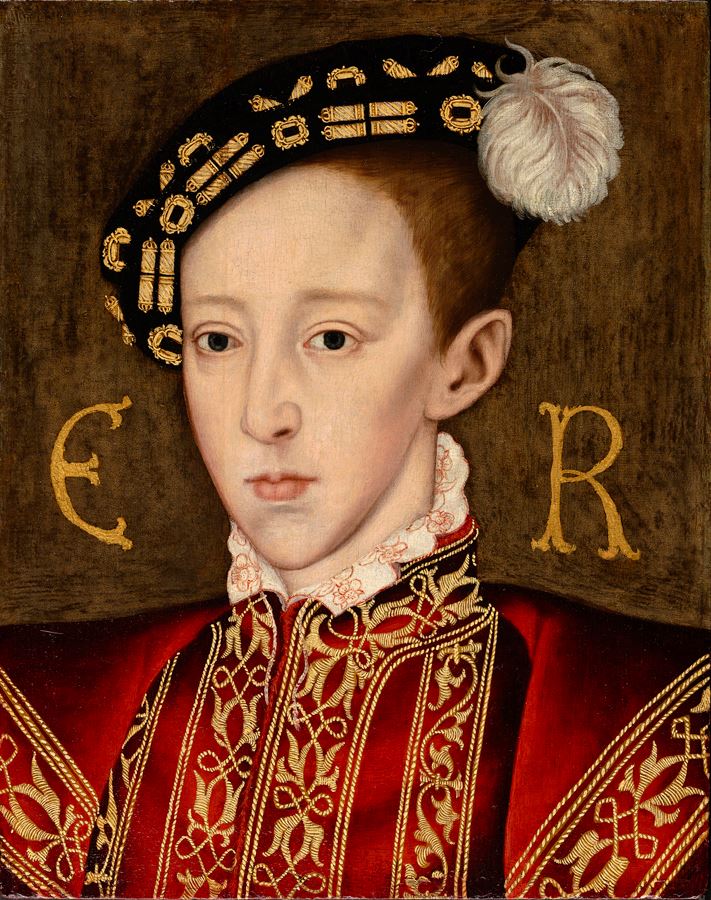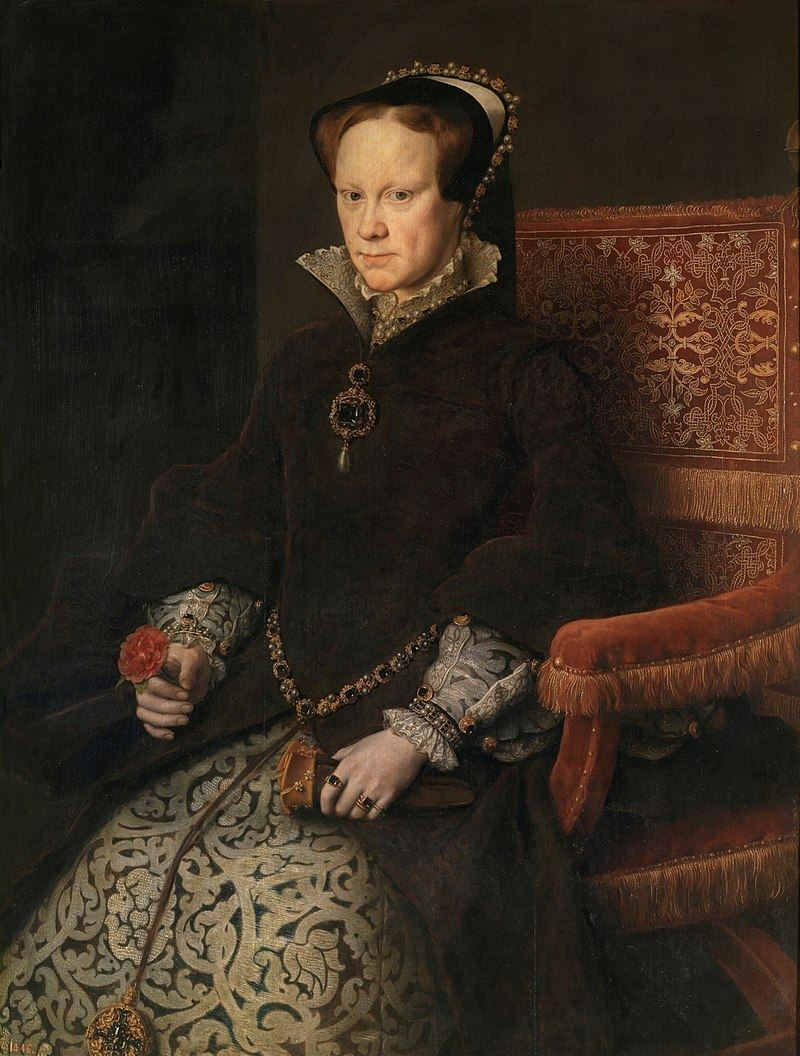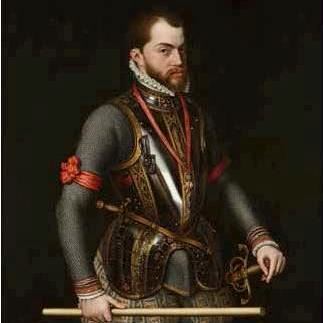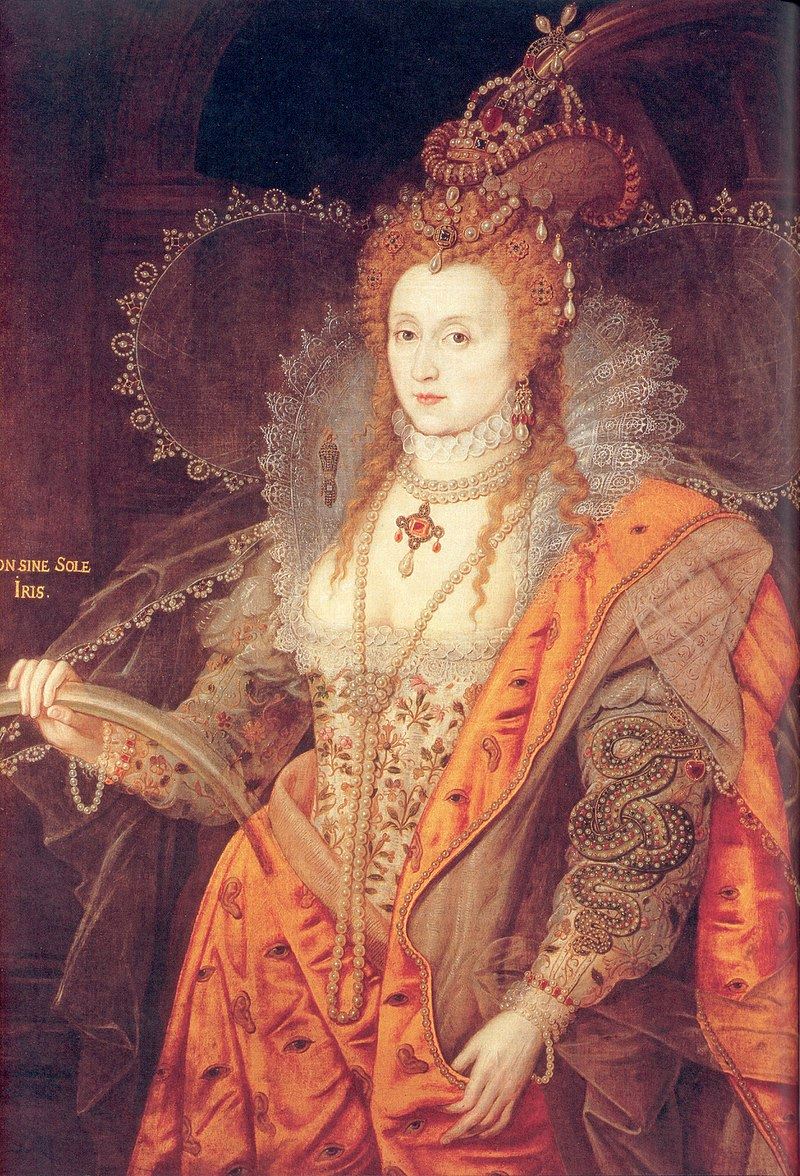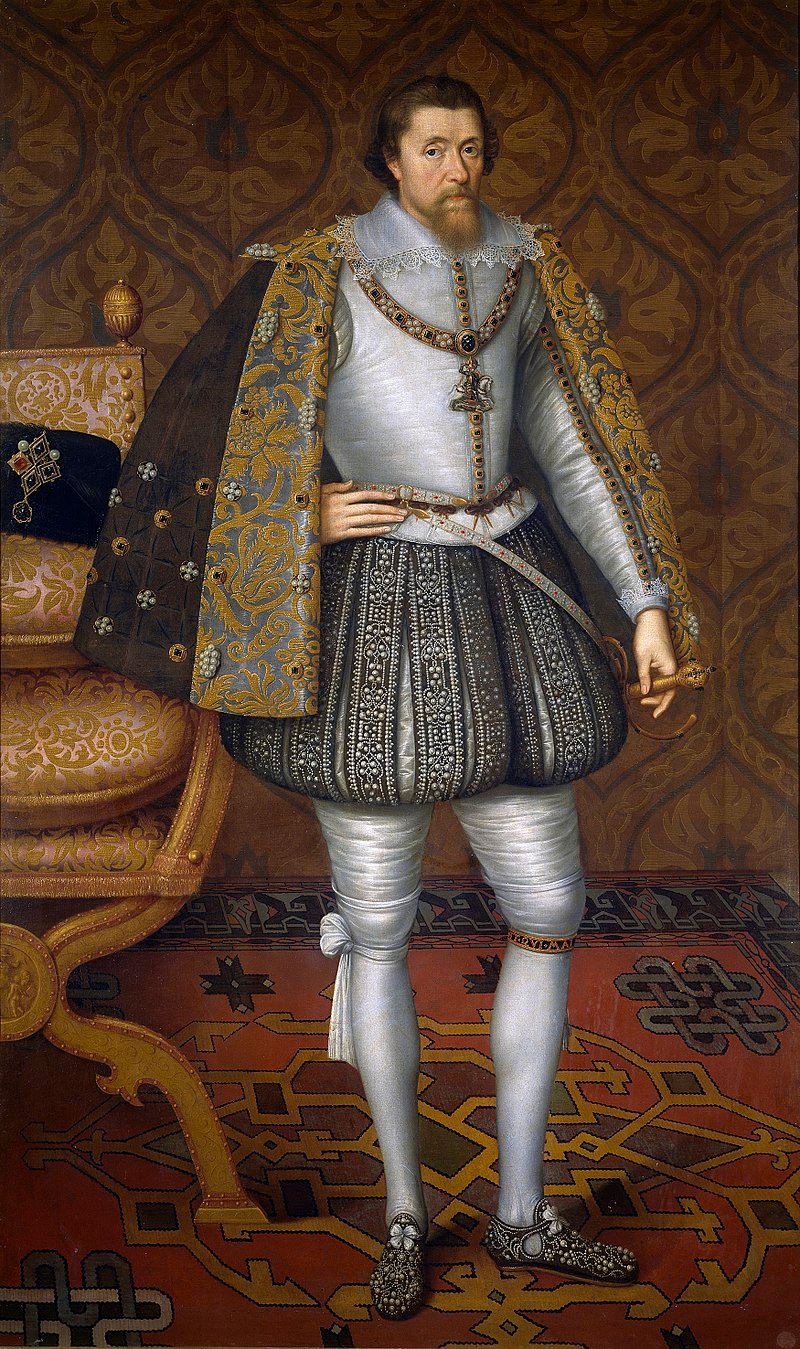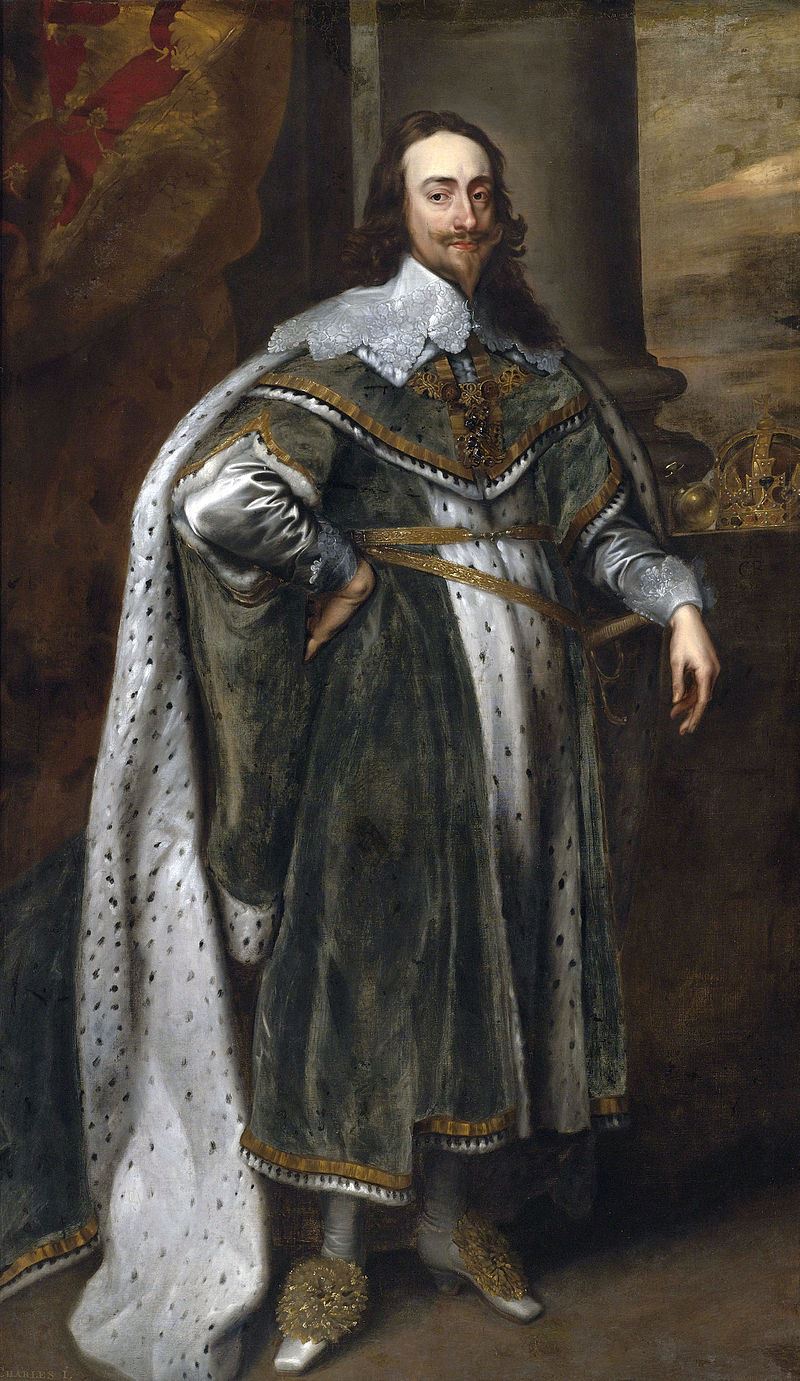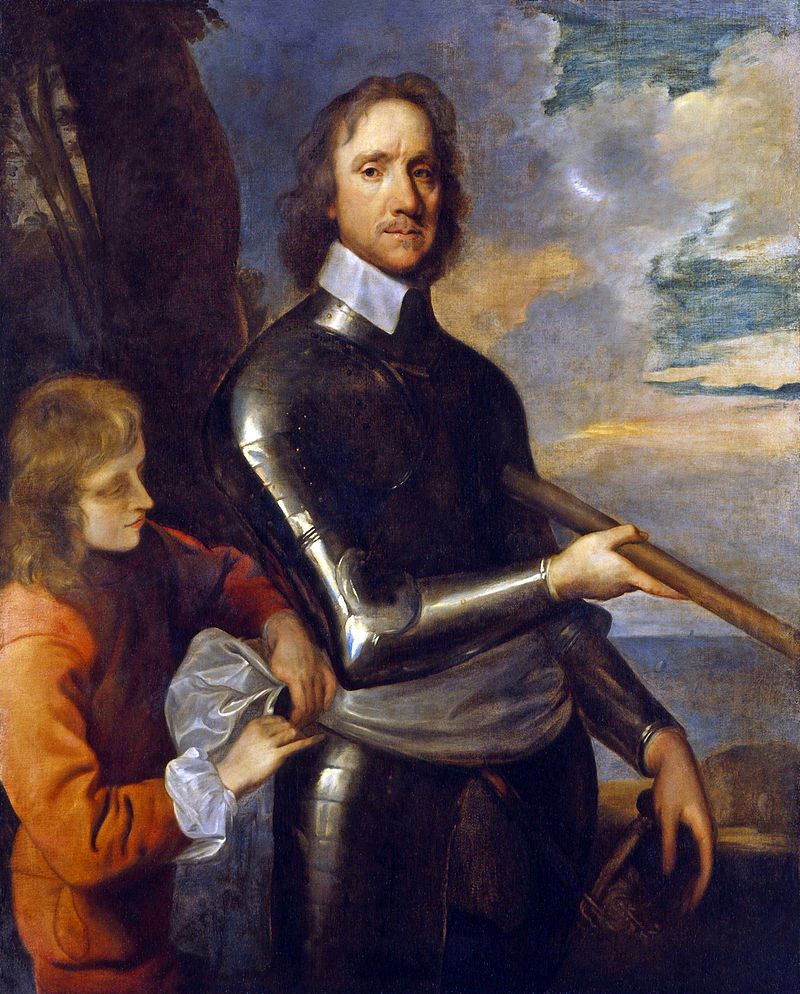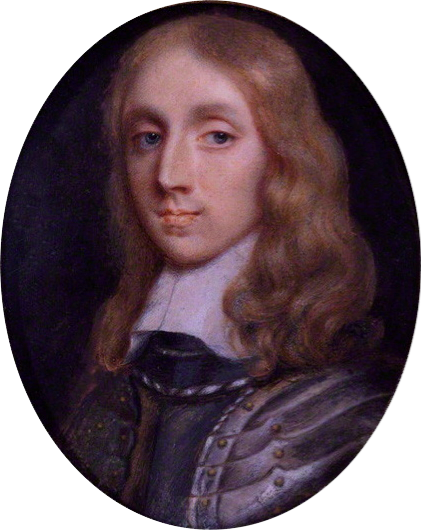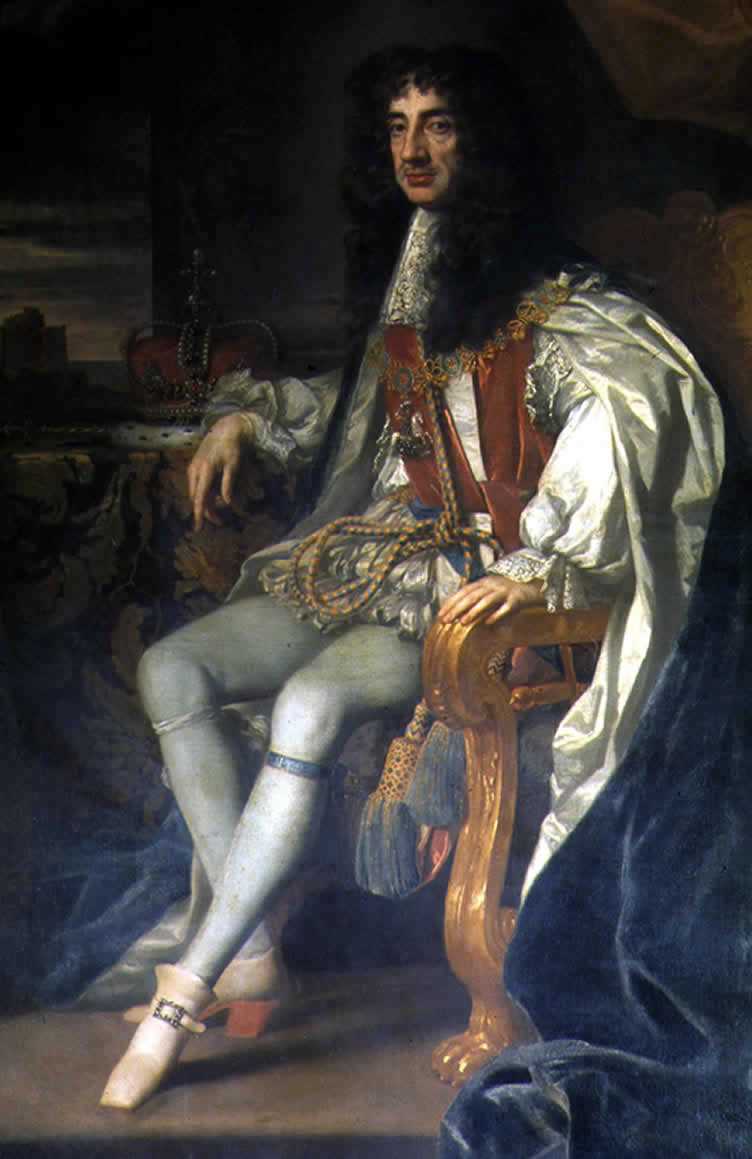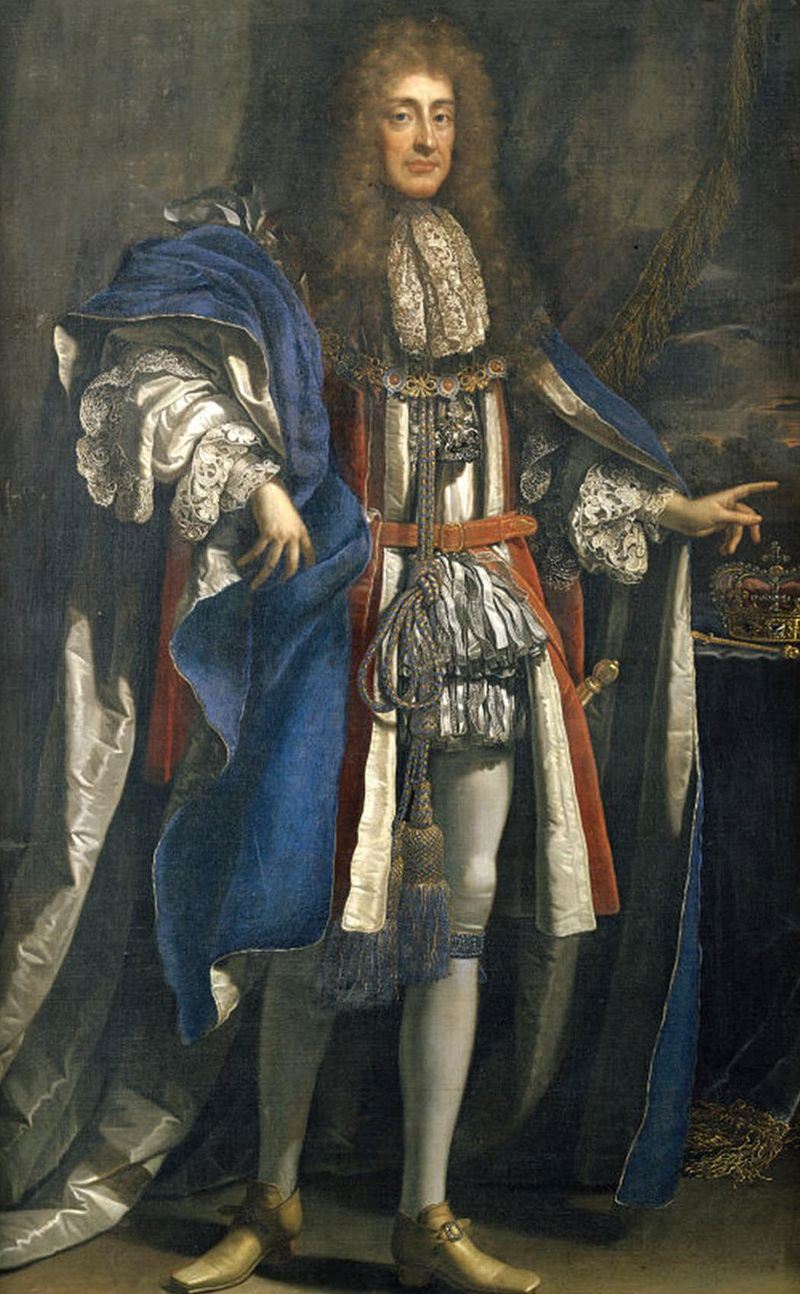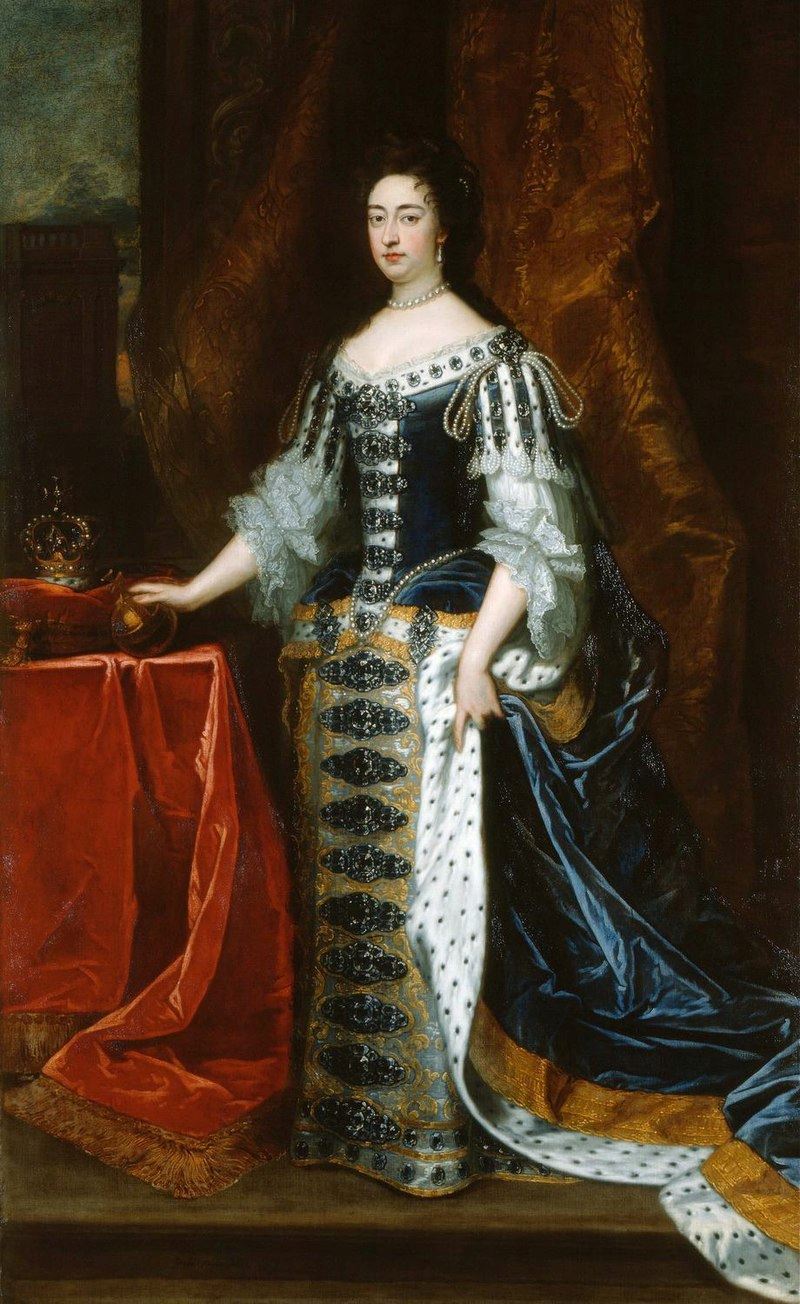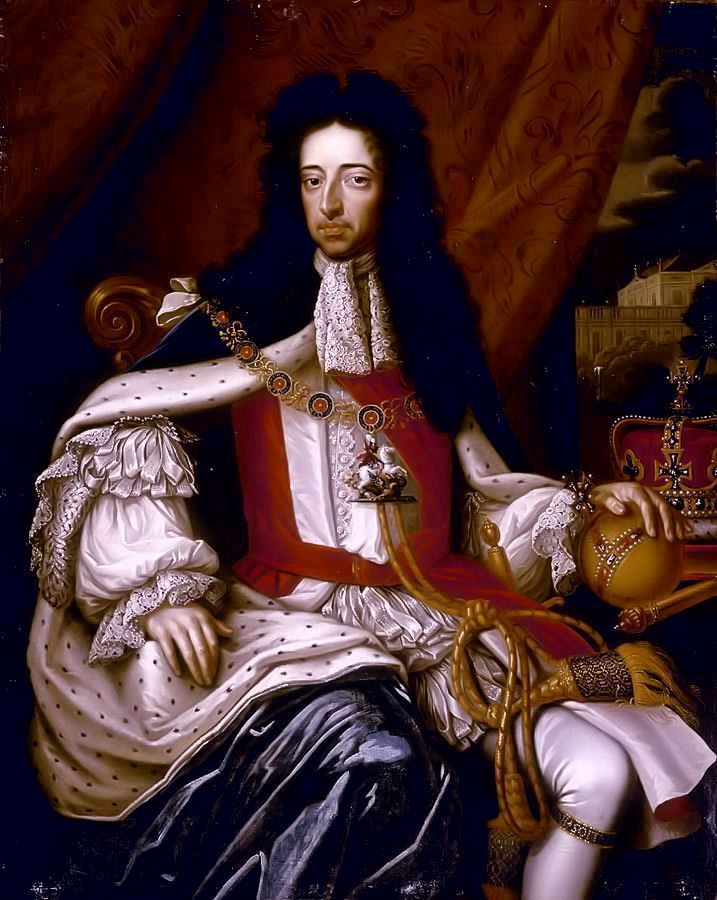In Western Europe, the Medieval Period can be roughly said to last from the fall of the Western Roman Empire and until the start of the Rennaisance in the 15th Century.
European medieval coinage can be roughly divided in three uneven categories; the post-antique period, the Carolingian revolution, and finally the later medieval period, which saw the birth of both merchant city-states and larger ‘nation-states’ like England, France or Castile.
Later work will see this category fleshed out more, and maybe split up if necessary.
European medieval coinage can be roughly divided in three uneven categories; the post-antique period, the Carolingian revolution, and finally the later medieval period, which saw the birth of both merchant city-states and larger ‘nation-states’ like England, France or Castile.
Later work will see this category fleshed out more, and maybe split up if necessary.
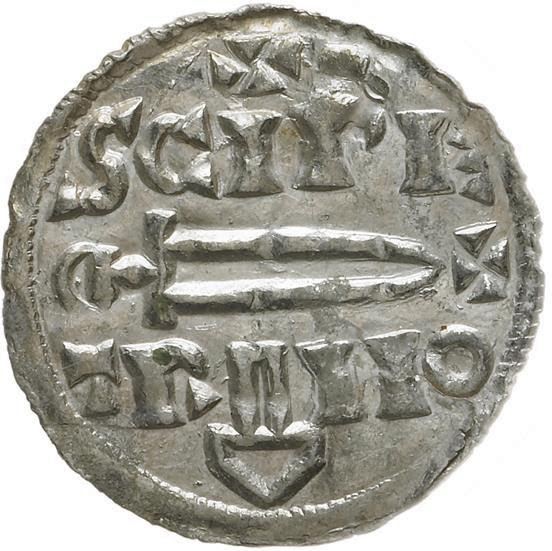
Rusudan, a member of the Bagrationi dynasty, ruled as Queen Regnant of Georgia in 1223–1245. She was known as a beautiful woman devoted to pleasure, whose hand was sought by her Muslim neighbors. In Muslim sources, such as Ata-Malik Juvayni, Rusudan was known as Qiz-Malik, from the Turkish qiz, "maiden", and the Arabic malik, "king".
In the autumn of 1225, Georgia was attacked by the Kh...
In the autumn of 1225, Georgia was attacked by the Kh...
Alfred was King of Wessex from 871 to 899, and successfully defended his kingdom against Viking attempts at conquest,. By the time of his death had become the dominant ruler in England.
He is one of only two English monarchs to be given the epithet "the Great", the other being the Dane Cnut the Great. He was also the first king to style himself "King of the Anglo-Saxons", and is therefo...
He is one of only two English monarchs to be given the epithet "the Great", the other being the Dane Cnut the Great. He was also the first king to style himself "King of the Anglo-Saxons", and is therefo...
Bohemond III of Antioch was Prince of Antioch from 1163 to 1201. He was the elder son of Constance of Antioch and her first husband, Raymond of Poitiers. Bohemond ascended to the throne after the Antiochene noblemen dethroned his mother with the assistance of Thoros II, Lord of Armenian Cilicia.
He fell into captivity in the Battle of Artah in 1164, but the victorious Nur ad-Din, atabe...
He fell into captivity in the Battle of Artah in 1164, but the victorious Nur ad-Din, atabe...
Pietro Loredano was the 84th Doge of Venice. He reigned from 1567 to 1570. He came from an important family of Venice, the House of Loredan, from a branch with Leonardo Loredan, the 75th Doge. His mother, Isabella Barozzi came from one of the oldest Venetian families.
Loredan was at the age of 85 years when elected to the office after having been in a long conclave of two weeks and 76 b...
Loredan was at the age of 85 years when elected to the office after having been in a long conclave of two weeks and 76 b...
Fulk IV, called le Réchin, was the Count of Anjou from 1068 until his death. The nickname has no certain translation. Philologists have made numerous very different suggestions, including "quarreler", "rude", "sullen", "surly" and "heroic". He was noted to be "a man with many reprehensible, even scandalous, habits" by Orderic Vitalis.
When Geoffrey Martel died without direct heirs he le...
When Geoffrey Martel died without direct heirs he le...
Edward the Elder was King of the Anglo-Saxons from 899 until his death. He was the elder son of Alfred the Great and his wife Ealhswith. When Edward succeeded to the throne, he had to defeat a challenge from his cousin Æthelwold, who had a strong claim to the throne as the son of Alfred's elder brother and predecessor, Æthelred.
In 910 a Mercian and West Saxon army inflicted a decisive ...
In 910 a Mercian and West Saxon army inflicted a decisive ...
Bohemond IV was Count of Tripoli from 1187 to 1233, and Prince of Antioch from 1201 to 1216 and from 1219 to 1233. He was the younger son of Bohemond III of Antioch. The dying Raymond III of Tripoli offered his county to Bohemond's elder brother, Raymond, but their father sent Bohemond to Tripoli in late 1187.
After his father died in April 1201, Bohemond seized Antioch with the suppor...
After his father died in April 1201, Bohemond seized Antioch with the suppor...
Henry II was the last crowned King of Jerusalem (after the fall of Acre in 1291, this title became empty) and also ruled as King of Cyprus. He was a Lusignan dynast. He was the second surviving son of Hugh III and succeeded his brother John I in May 1285; there was some suspicion that Henry had been involved in poisoning John. He was crowned at Santa Sophia, Nicosia, 24 June 1285.
Durin...
Durin...
Æthelstan was King of the Anglo-Saxons from 924 to 927 and King of the English from 927 to 939 when he died. He was the son of King Edward the Elder and his first wife, Ecgwynn. Modern historians regard him as the first King of England and one of the greatest Anglo-Saxon kings. He never married, had no children, and was succeeded by his half-brother, Edmund.
Æthelstan centralised govern...
Æthelstan centralised govern...
Hugh IV was King of Cyprus from 31 March 1324 to his abdication, on 24 November 1358 and, nominally, King of Jerusalem, as Hugh II, until his death.
Hugh appears to have been content to rule Cyprus, as he prevented his son, Peter I, from going to Western Europe to recruit support for a new crusade to recover their Kingdom of Jerusalem. In 1344, he joined a league with Venice and the Kn...
Hugh appears to have been content to rule Cyprus, as he prevented his son, Peter I, from going to Western Europe to recruit support for a new crusade to recover their Kingdom of Jerusalem. In 1344, he joined a league with Venice and the Kn...
Edmund I was King of the English from 939 until his death. He was the son of Edward the Elder and his third wife Eadgifu of Kent, and a grandson of Alfred the Great. His father died when he was young, and was succeeded by his oldest son Æthelstan. Edmund came to the throne upon the death of his half-brother in 939, apparently with little opposition.
His reign was marked by almost const...
His reign was marked by almost const...
James II was the penultimate King of Cyprus, reigning from 1463 until his death in1473. He is known as Jaques II in French.
James was born in Nicosia as the illegitimate son of John II of Cyprus and Marietta de Patras. He was a great favourite of his father, and in 1456, at the age of 16, he was appointed to the archbishopric of Nicosia. After murdering Iacopo Urri, the Royal Chamberla...
James was born in Nicosia as the illegitimate son of John II of Cyprus and Marietta de Patras. He was a great favourite of his father, and in 1456, at the age of 16, he was appointed to the archbishopric of Nicosia. After murdering Iacopo Urri, the Royal Chamberla...
Eadred was King of the English from 946 until his death. He was the son of Edward the Elder and his third wife Eadgifu of Kent, and a grandson of Alfred the Great.
Eadred came to the throne following the assassination of his older brother, Edmund I. The chief achievement of his reign was to bring the Kingdom of Northumbria under total English control, which occurred with the defeat and...
Eadred came to the throne following the assassination of his older brother, Edmund I. The chief achievement of his reign was to bring the Kingdom of Northumbria under total English control, which occurred with the defeat and...
Fulk V, also known as Fulk the Younger, was the Count of Anjou from 1109 to 1129 and the King of Jerusalem from 1131 to his death. During his reign, the Kingdom of Jerusalem reached its largest territorial extent.
He was originally an opponent of King Henry I of England and a supporter of King Louis VI of France, but in 1118 or 1119 he had allied with Henry when he arranged for his daug...
He was originally an opponent of King Henry I of England and a supporter of King Louis VI of France, but in 1118 or 1119 he had allied with Henry when he arranged for his daug...
Eadwig was was King of the English from 955 until his premature death in 959. He was the elder son of King Edmund I and his Queen Ælfgifu of Shaftesbury, and became King in 955 aged 15 following the death of his uncle Eadred.
Eadwig's short reign was tarnished by disputes with nobles and men of the church, including Archbishops Dunstan and Oda. He died in 959, having ruled less than fou...
Eadwig's short reign was tarnished by disputes with nobles and men of the church, including Archbishops Dunstan and Oda. He died in 959, having ruled less than fou...
Edgar was King of the English from 959 until his death in 975. He was the younger son of Edmund I and Ælfgifu of Shaftesbury, and came to the throne as a teenager, following the death of his older brother Eadwig.
As king, Edgar further consolidated the political unity achieved by his predecessors, with his reign being noted for its relative stability. His most trusted advisor was Dunsta...
As king, Edgar further consolidated the political unity achieved by his predecessors, with his reign being noted for its relative stability. His most trusted advisor was Dunsta...
Edward was King of England from 975 until he was murdered in 978. Edward was the eldest son of King Edgar the Peaceful but was not his father's acknowledged heir.
On Edgar's death, the leadership of England was contested, with some supporting Edward's claim to be king and others supporting his younger half-brother Æthelred the Unready, recognized as a legitimate son of Edgar. Edward wa...
On Edgar's death, the leadership of England was contested, with some supporting Edward's claim to be king and others supporting his younger half-brother Æthelred the Unready, recognized as a legitimate son of Edgar. Edward wa...
Æthelred was King of the English from 978 to 1013 and again from 1014 until his death. His epithet does not derive from the modern word "unready", but rather from the Old English unræd (meaning "poorly advised"); it is a pun on his name, which means "well advised". He was the son of King Edgar and Queen Ælfthryth. He came to the throne at about the age of 12, following the assassination of his old...
Sweyn was was king of Denmark during 986–1014. He ruled as King of England for 41 days in 1013/1014.
The "Chronicle of John of Wallingford" (c. 1225–1250) records Sweyn's involvement in raids against England during 1002–1005, 1006–1007, and 1009–1012 to avenge the St. Brice's Day massacre of England's Danish inhabitants in November 1002. According to Ashley (1998), Sweyn's invasion was ...
The "Chronicle of John of Wallingford" (c. 1225–1250) records Sweyn's involvement in raids against England during 1002–1005, 1006–1007, and 1009–1012 to avenge the St. Brice's Day massacre of England's Danish inhabitants in November 1002. According to Ashley (1998), Sweyn's invasion was ...
Edmund was King of the English from 23 April to 30 November 1016. He was the son of King Æthelred the Unready and his first wife, Ælfgifu of York. He was not expected to be King of England; however, by 1014 two elder brothers had died, making him the oldest male heir. His father, Æthelred, was usurped by Sweyn Forkbeard in that same year, but Sweyn died shortly thereafter, paving the way for Æthel...
Cnut was King of Denmark, England and Norway; together often referred to as the North Sea Empire. Yet after the deaths of his heirs within a decade of his own, and the Norman conquest of England in 1066, this legacy was lost.
Cnut won the throne of England in 1016 in the wake of centuries of Viking activity in northwestern Europe. His latter accession to the Danish throne in 1018 brough...
Cnut won the throne of England in 1016 in the wake of centuries of Viking activity in northwestern Europe. His latter accession to the Danish throne in 1018 brough...
Harold was King of the English from 1035 to 1040. The son of Cnut the Great and Ælfgifu of Northampton, Harold was elected regent of England, following the death of his father in 1035. He was initially ruling England in place of his brother Harthacnut, who was stuck in Denmark due to a rebellion in Norway, which had ousted their brother Svein.
Although Harold had wished to be crowned k...
Although Harold had wished to be crowned k...
Harthacnut, sometimes referred to as Cnut III, was King of Denmark from 1035 to 1042 and King of England from 1040 to 1042. He was the son of King Cnut the Great (who ruled Denmark, Norway, and England) and Emma of Normandy.
When Cnut died in 1035, Harthacnut struggled to retain his father's possessions. Magnus I took control of Norway, but Harthacnut succeeded as King of Denmark and be...
When Cnut died in 1035, Harthacnut struggled to retain his father's possessions. Magnus I took control of Norway, but Harthacnut succeeded as King of Denmark and be...
Edward the Confessor was among the last Anglo-Saxon kings of England, ruling from 1042 to 1066. He is usually considered the last king of the House of Wessex.
Historians disagree about Edward's fairly long reign. His nickname reflects the traditional image of him as unworldly and pious. Confessor reflects his reputation as a saint who did not suffer martyrdom, as opposed to King Edward ...
Historians disagree about Edward's fairly long reign. His nickname reflects the traditional image of him as unworldly and pious. Confessor reflects his reputation as a saint who did not suffer martyrdom, as opposed to King Edward ...
Harold Godwinson was the last crowned Anglo-Saxon king of England. He reigned from 6 January 1066 until his death at the Battle of Hastings, fighting the Norman invaders led by William the Conqueror during the Norman conquest of England. His death marked the end of Anglo-Saxon rule over England.
Harold was a powerful earl and member of a prominent Anglo-Saxon family with ties to Cnut th...
Harold was a powerful earl and member of a prominent Anglo-Saxon family with ties to Cnut th...
Edgar II was the last male member of the royal house of Cerdic of Wessex. He was elected King of England by the Witenagemot in 1066, following Harold II's defeat at Hastings, but was never crowned.
When William I approached London, the noblemen who elected him quickly abandoned his cause and submitted to the invader. As the Normans closed in on London, Edgar's key supporters in the city...
When William I approached London, the noblemen who elected him quickly abandoned his cause and submitted to the invader. As the Normans closed in on London, Edgar's key supporters in the city...
William I was the first Norman King of England, reigning from 1066 until his death in 1087. A descendant of Rollo, he was Duke of Normandy from 1035 onward. After a long struggle to establish his power, by 1060 his hold on Normandy was secure, and he launched the Norman conquest of England six years later.
William's final years were marked by difficulties in his continental domains, tro...
William's final years were marked by difficulties in his continental domains, tro...
William II, the third son of William the Conqueror, was King of England from 1087 until 1100, with powers over Normandy, and influence in Scotland. He was less successful in extending control into Wales.
William was a figure of complex temperament, capable of both bellicosity and flamboyance. He did not marry, nor did he produce any offspring, legitimate or otherwise, which has led to s...
William was a figure of complex temperament, capable of both bellicosity and flamboyance. He did not marry, nor did he produce any offspring, legitimate or otherwise, which has led to s...
Henry I was King of England from 1100 to his death in 1135. He was the fourth son of William the Conqueror and was educated in Latin and the liberal arts. He was present when William II died in a hunting accident in 1100, and he seized the English throne, promising at his coronation to correct many of William's less popular policies.
Considered by contemporaries to be a harsh but effect...
Considered by contemporaries to be a harsh but effect...
Stephen was King of the English from 1135 to his death in 1154, as well as Count of Boulogne from 1125 until 1147 and Duke of Normandy from 1135 until 1144.
Stephen's reign was marked by the Anarchy, a civil war with his cousin and rival, the Empress Matilda. he early years of Stephen's reign were largely successful, despite a series of attacks on his possessions in England and Norman...
Stephen's reign was marked by the Anarchy, a civil war with his cousin and rival, the Empress Matilda. he early years of Stephen's reign were largely successful, despite a series of attacks on his possessions in England and Norman...
Matilda was the claimant to the English throne during the civil war known as the Anarchy. The daughter of King Henry I of England, was Holy Roman empress before being made heir to the English throne following the death of her brother in 1120. She was remarried to Geoffrey of Anjou.
Henry I died in 1135, but Matilda and Geoffrey faced opposition from the Norman barons and were unable to ...
Henry I died in 1135, but Matilda and Geoffrey faced opposition from the Norman barons and were unable to ...
Henry II ruled as King of the English from 1154 to 1189. He was also Duke of Normandy and Aquitaine, Count of Anjou, Maine, and Nantes, and Lord of Ireland; at various times, he also partially controlled Wales, Scotland and Brittany.
Henry was an energetic and sometimes ruthless ruler, driven by a desire to restore the lands and privileges of his grandfather Henry I. During the early ye...
Henry was an energetic and sometimes ruthless ruler, driven by a desire to restore the lands and privileges of his grandfather Henry I. During the early ye...
RIchard I was King of the English from 1189 until his death in 1199. He also ruled as Duke of Normandy, Aquitaine and Gascony, Lord of Cyprus, Count of Poitiers, Anjou, Maine, and Nantes, and was overlord of Brittany at various times during the same period. He was the third of five sons of King Henry II of England and Duchess Eleanor of Aquitaine.
He was known as Richard Cœur de Lion or...
He was known as Richard Cœur de Lion or...
John was King of England from 1199 until his death in 1216. He was the youngest of five sons of Henry II and Duchess Eleanor of Aquitaine, was at first not expected to inherit significant lands. He was proclaimed king of England in 1199 after the death of his elder brother, Richard I.
Contemporary chroniclers were mostly critical of John's performance as king, and his reign has since be...
Contemporary chroniclers were mostly critical of John's performance as king, and his reign has since be...
Louis was King of France from 1223 to 1226, and also claimed to be King of England from 1216 to 1217. He was the only surviving son of King Philip II of France by his first wife, Isabelle of Hainaut, from whom he inherited the County of Artois.
During the First Barons' War of 1215–17 against King John of England, his military prowess earned him the epithet the Lion. After his victory at...
During the First Barons' War of 1215–17 against King John of England, his military prowess earned him the epithet the Lion. After his victory at...
Henry III was King of England, Lord of Ireland, and Duke of Aquitaine from 1216 until his death in 1272. The son of King John and Isabella of Angoulême, Henry assumed the throne when he was only nine in the middle of the First Barons' War.
Henry ruled England personally, rather than governing through senior ministers. He travelled less than previous monarchs, investing heavily in a hand...
Henry ruled England personally, rather than governing through senior ministers. He travelled less than previous monarchs, investing heavily in a hand...
Edward I 'Longshanks' was King of England from 1272 to 1307. Before his accession to the throne, he was commonly referred to as The Lord Edward. The eldest son of Henry III, Edward was involved early in the political intrigues of his father's reign, which included an outright rebellion by the English barons.
He spent much of his reign reforming royal administration and common law. Throu...
He spent much of his reign reforming royal administration and common law. Throu...
Edward II was King of England from 1307 until he was deposed in January 1327. The fourth son of Edward I, Edward became the heir apparent to the throne following the death of his older brother Alphonso. Beginning in 1300, Edward accompanied his father on campaigns to pacify Scotland, and in 1306 he was knighted in a grand ceremony at Westminster Abbey. Edward succeeded to the throne in 1307, follo...
Edward III was King of England and Lord of Ireland from January 1327 until his death in 1377; he is noted for his military success and for restoring royal authority after the disastrous and unorthodox reign of his father, Edward II.
Edward was crowned at age fourteen after his father was deposed by his mother, Isabella of France, and her lover Roger Mortimer. At age seventeen he led a s...
Edward was crowned at age fourteen after his father was deposed by his mother, Isabella of France, and her lover Roger Mortimer. At age seventeen he led a s...
Richard II was King of England from 1377 until he was deposed in 1399. Richard, a son of Edward the Black Prince, was born in Bordeaux during the reign of his grandfather, Edward III.
During Richard's first years as king, government was in the hands of a series of councils. Most of the aristocracy preferred this to a regency led by the king's uncle, John of Gaunt, yet Gaunt remained hig...
During Richard's first years as king, government was in the hands of a series of councils. Most of the aristocracy preferred this to a regency led by the king's uncle, John of Gaunt, yet Gaunt remained hig...
Henry IV was King of England and Lord of Ireland from 1399 to 1413, and asserted the claim of his grandfather, Edward III, to the Kingdom of France. Henry was born at Bolingbroke Castle in Lincolnshire. His father, John of Gaunt, was the fourth son–third to survive to adulthood–of Edward III and enjoyed a position of considerable influence during much of the reign of Henry's cousin Richard II, who...
Henry V was King of England from 1413 until his early death in 1422. He was the second English monarch of the House of Lancaster. Despite his relatively short reign, Henry's outstanding military successes in the Hundred Years' War against France made England one of the strongest military powers in Europe.
In 1415, Henry embarked on war with France in the ongoing Hundred Years' War (1337...
In 1415, Henry embarked on war with France in the ongoing Hundred Years' War (1337...
Henry VI was King of England from 1422 to 1461 and again from 1470 to 1471, and disputed King of France from 1422 to 1453. The only child of Henry V, he succeeded to the English throne at the age of nine months upon his father's death, and succeeded to the French throne on the death of his maternal grandfather Charles VI shortly afterwards.
His early reign, when several people were ruli...
His early reign, when several people were ruli...
Edward IV was the King of England from 4 March 1461 to 3 October 1470, and again from 11 April 1471 until his death in 1483. He was the first Yorkist King of England, and came to the throne after deposing Henry VI.
Most of England's leading families had remained loyal to Henry VI or remained uncommitted in the recent conflict. The new regime, therefore, relied heavily on the support of ...
Most of England's leading families had remained loyal to Henry VI or remained uncommitted in the recent conflict. The new regime, therefore, relied heavily on the support of ...
Edward V succeeded his father, Edward IV, as King of England and Lord of Ireland upon the latter's death on 9 April 1483. He was never crowned, and his brief reign was dominated by the influence of his uncle and Lord Protector, the Duke of Gloucester, who deposed him to reign as Richard III on 26 June 1483.
Edward and his younger brother Richard of Shrewsbury, Duke of York, were the Pri...
Edward and his younger brother Richard of Shrewsbury, Duke of York, were the Pri...
Richard III was King of England from 1483 until his death at the Battle of Bosworth Field in 1485. He was the last king of the House of York and the last of the Plantagenet dynasty. His defeat at Bosworth Field, the last decisive battle of the Wars of the Roses, marked the end of the Middle Ages in England.
There were two major rebellions against Richard during his reign. The first, in ...
There were two major rebellions against Richard during his reign. The first, in ...
Henry VII was the King of England and Lord of Ireland from his seizure of the crown on 22 August 1485 to his death on 21 April 1509. He was the first monarch of the House of Tudor.
Henry attained the throne when his forces defeated King Richard III at the Battle of Bosworth Field, the culmination of the Wars of the Roses. He was the last king of England to win his throne on the field of...
Henry attained the throne when his forces defeated King Richard III at the Battle of Bosworth Field, the culmination of the Wars of the Roses. He was the last king of England to win his throne on the field of...
Henry VIII was King of England from 1509 until his death. Henry was the second Tudor monarch, succeeding his father, Henry VII. He is best known for his six marriages, in particular his efforts to have his first marriage, to Catherine of Aragon, annulled. His disagreement with the Pope on the question of such an annulment led Henry to initiate the English Reformation, separating the Church of Engl...
Edward VI was King of England and Ireland from 28 January 1547 until his death. He was crowned on 20 February at the age of nine. Edward was the son of Henry VIII and Jane Seymour, and England's first monarch to be raised as a Protestant. During his reign, the realm was governed by a regency council because he never reached his majority.
Edward's reign was marked by economic problems an...
Edward's reign was marked by economic problems an...
Janeknown, also as Lady Jane Dudley and as "the Nine Days' Queen", was an English noblewoman and de facto Queen of England and Ireland from 10 July until 19 July 1553.
Jane was the great-granddaughter of Henry VII through his younger daughter Mary, and was a first cousin once removed of Edward VI. She had an excellent humanist education and a reputation as one of the most learned young ...
Jane was the great-granddaughter of Henry VII through his younger daughter Mary, and was a first cousin once removed of Edward VI. She had an excellent humanist education and a reputation as one of the most learned young ...
Mary I was the Queen of England and Ireland from July 1553 until her death in 1558. Mary was the only child of Henry VIII by his first wife, Catherine of Aragon, to survive to adulthood.
Her younger half-brother Edward VI succeeded their father in 1547 at the age of nine. he attempted to remove Mary from the line of succession because he supposed (correctly) that she would reverse the ...
Her younger half-brother Edward VI succeeded their father in 1547 at the age of nine. he attempted to remove Mary from the line of succession because he supposed (correctly) that she would reverse the ...
Philip as King of Spain(1556–98), King of Portugal (1581–98), King of Naples and Sicily (both from 1554), and jure uxoris King of England and Ireland during his marriage to Queen Mary I from 1554–58.
A devout Catholic, Philip saw himself as the defender of Catholic Europe against the Ottoman Empire and the Protestant Reformation. He sent a large armada to conquer Protestant England in 1...
A devout Catholic, Philip saw himself as the defender of Catholic Europe against the Ottoman Empire and the Protestant Reformation. He sent a large armada to conquer Protestant England in 1...
Elizabeth I was Queen of England and Ireland from 17 November 1558 until her death on 24 March 1603. Sometimes called The Virgin Queen, Gloriana or Good Queen Bess, Elizabeth was the last of the five monarchs of the House of Tudor.
In government, Elizabeth was more moderate than her father and half-siblings had been. In religion, she was relatively tolerant and avoided systematic persec...
In government, Elizabeth was more moderate than her father and half-siblings had been. In religion, she was relatively tolerant and avoided systematic persec...
James was King of Scotland as James VI from 24 July 1567 and King of England and Ireland as James I from the union of the Scottish and English crowns on 24 March 1603 until his death in 1625. The kingdoms of Scotland and England were individual sovereign states, with their own parliaments, judiciaries, and laws, though both were ruled by James in personal union.
In the early years of Ja...
In the early years of Ja...
Charles I was monarch of the three kingdoms of England, Scotland, and Ireland from 27 March 1625 until his execution in 1649.
After his succession, Charles quarrelled with the Parliament of England, which sought to curb his royal prerogative. Charles believed in the divine right of kings and thought he could govern according to his own conscience. Many of his subjects opposed his polici...
After his succession, Charles quarrelled with the Parliament of England, which sought to curb his royal prerogative. Charles believed in the divine right of kings and thought he could govern according to his own conscience. Many of his subjects opposed his polici...
Oliver Cromwell was an English military and political leader. He served as Lord Protector of the Commonwealth of England, Scotland, and Ireland from 1653 until his death, acting simultaneously as head of state and head of government of the new republic.
Cromwell was one of the signatories of King Charles I's death warrant in 1649, and he dominated the short-lived Commonwealth of England...
Cromwell was one of the signatories of King Charles I's death warrant in 1649, and he dominated the short-lived Commonwealth of England...
Richard Cromwell
- Lord Protector of the Commonwealth of England from 3 September 1658 to 7 May 1659
Richard Cromwell became the second Lord Protector of England, Scotland and Ireland, and was one of only two commoners to become the English head of state, the other being his father, Oliver Cromwell, from whom he inherited the post.
On his father's death Richard became Lord Protector, but he lacked authority. He attempted to mediate between the army and civil society, and allowed a Parl...
On his father's death Richard became Lord Protector, but he lacked authority. He attempted to mediate between the army and civil society, and allowed a Parl...
Charles II was king of England, Scotland and Ireland. He was king of Scotland from 1649 until his deposition in 1651, and king of England, Scotland and Ireland from the restoration of the monarchy in 1660 until his death in 1685.
The major foreign policy issue of his early reign was the Second Anglo-Dutch War. In 1670, he entered into the Treaty of Dover, an alliance with his first cous...
The major foreign policy issue of his early reign was the Second Anglo-Dutch War. In 1670, he entered into the Treaty of Dover, an alliance with his first cous...
James II was King of England and Ireland as James II and King of Scotland as James VII, from 6 February 1685 until he was deposed in the Glorious Revolution of 1688. He was the last Roman Catholic monarch of England, Scotland and Ireland.
James is best known for his struggles with the English Parliament and his attempts to create religious liberty for English Roman Catholics and Protest...
James is best known for his struggles with the English Parliament and his attempts to create religious liberty for English Roman Catholics and Protest...
Mary II was Queen of England, Scotland, and Ireland, co-reigning with her husband and first cousin, King William III, from 1689 until her death in 1694.
William and Mary, both Protestants, became king and queen regnant following the Glorious Revolution, which resulted in the adoption of the English Bill of Rights and the deposition of her Roman Catholic father, James II. Mary wielded le...
William and Mary, both Protestants, became king and queen regnant following the Glorious Revolution, which resulted in the adoption of the English Bill of Rights and the deposition of her Roman Catholic father, James II. Mary wielded le...
William III also widely known as William of Orange, was sovereign Prince of Orange from birth, Stadtholder of Holland, Zeeland, Utrecht, Gelderland and Overijssel in the Dutch Republic from 1672 and King of England, Ireland and Scotland from 1689 until his death in 1702.
A Protestant, William participated in several wars against the powerful Catholic king of France, Louis XIV, in coalit...
A Protestant, William participated in several wars against the powerful Catholic king of France, Louis XIV, in coalit...
Anne was the Queen of England, Scotland and Ireland between 8 March 1702 and 1 May 1707. On 1 May 1707, under the Acts of Union, two of her realms, the kingdoms of England and Scotland, united as a single sovereign state known as Great Britain. She continued to reign as Queen of Great Britain and Ireland until her death in 1714.
During her reign, Anne favoured moderate Tory politicians,...
During her reign, Anne favoured moderate Tory politicians,...

